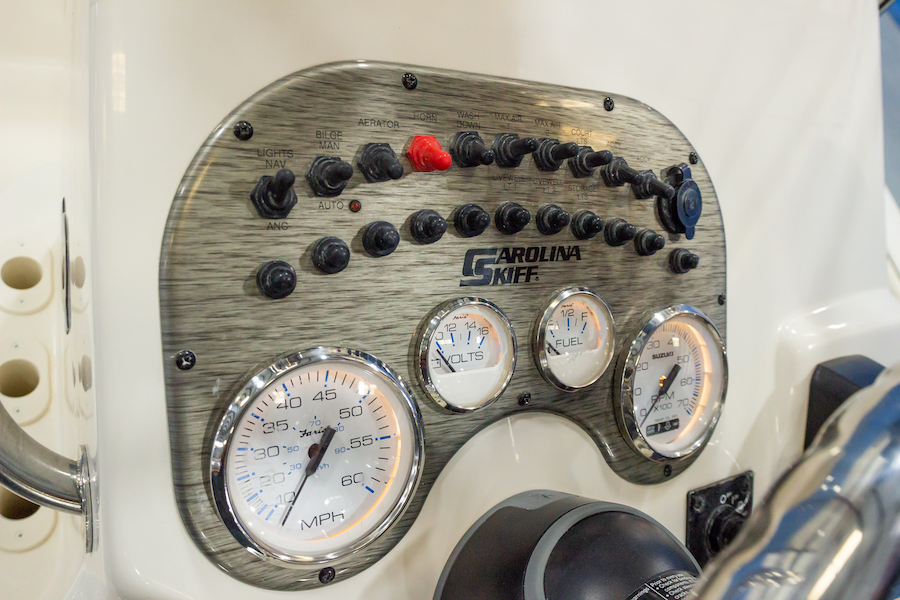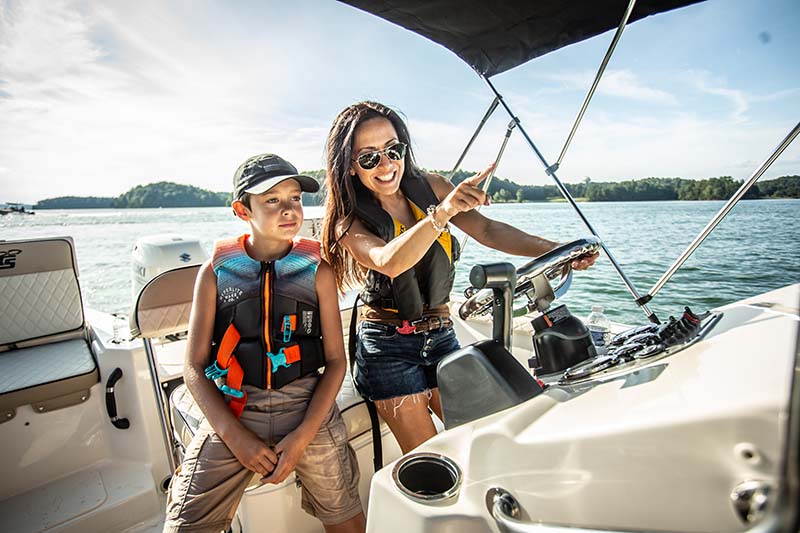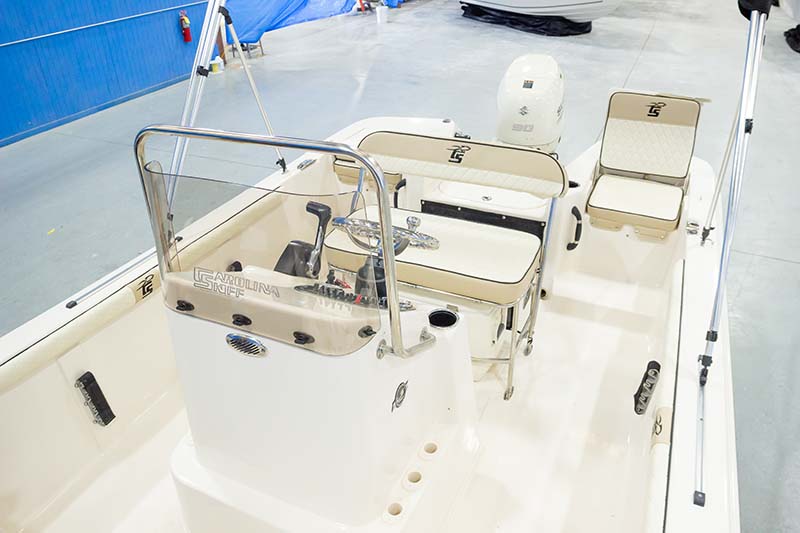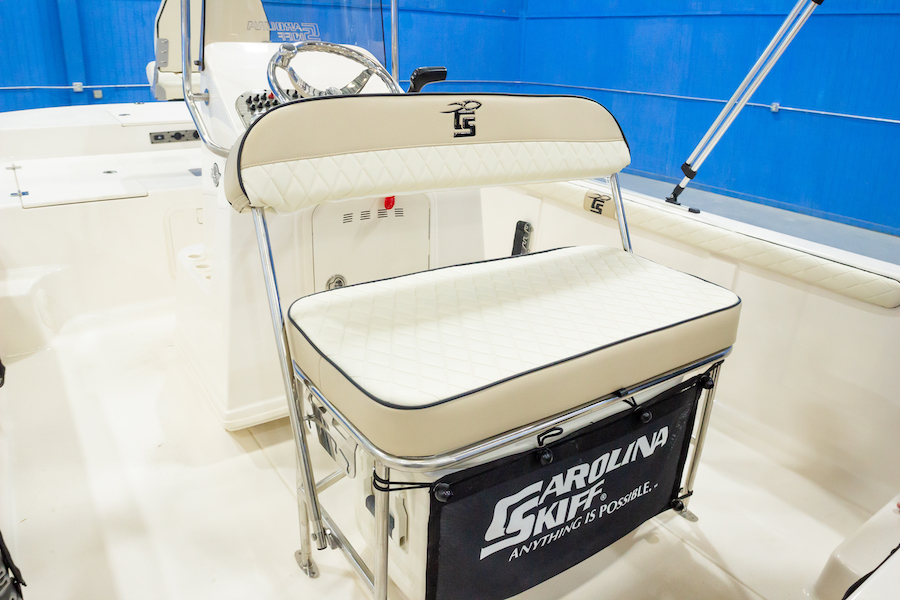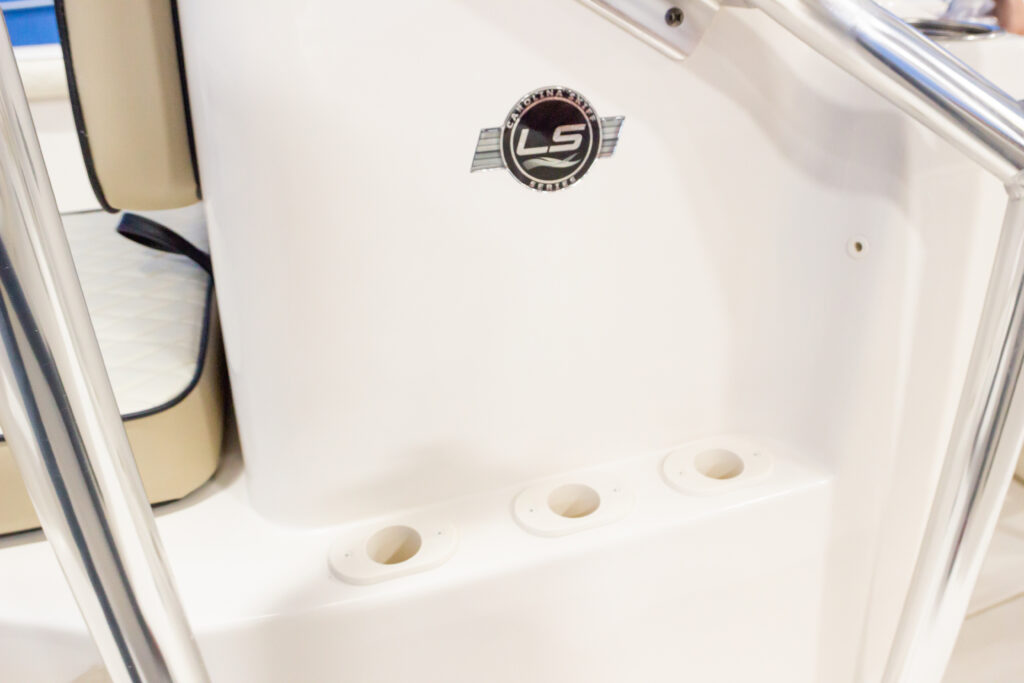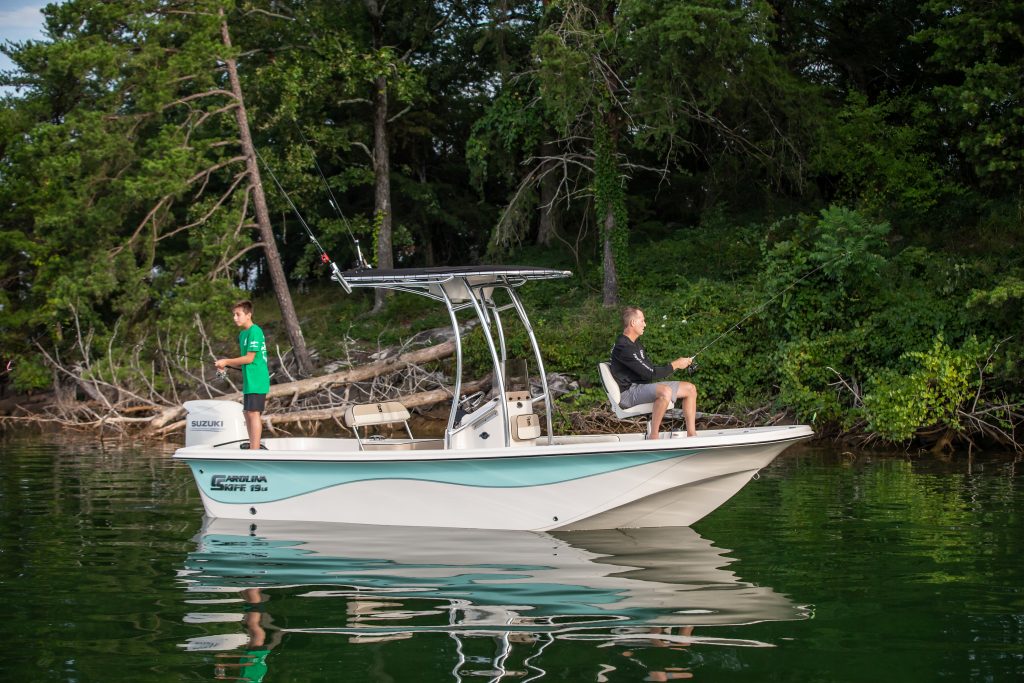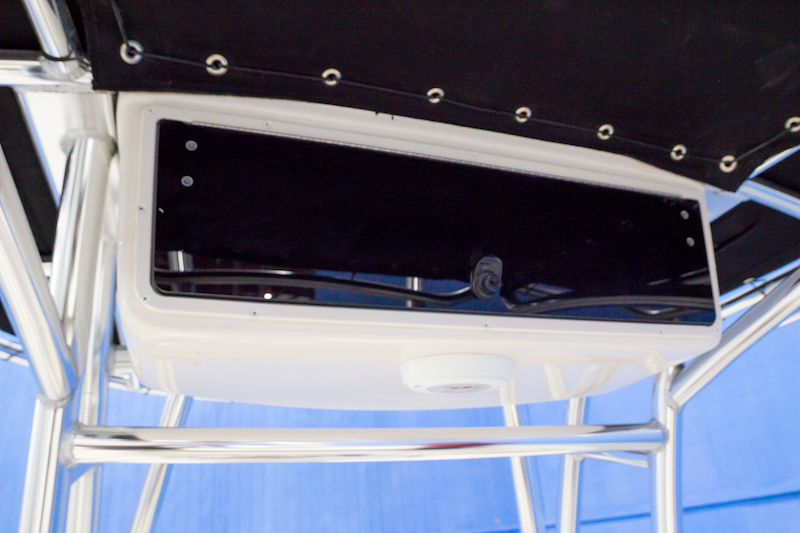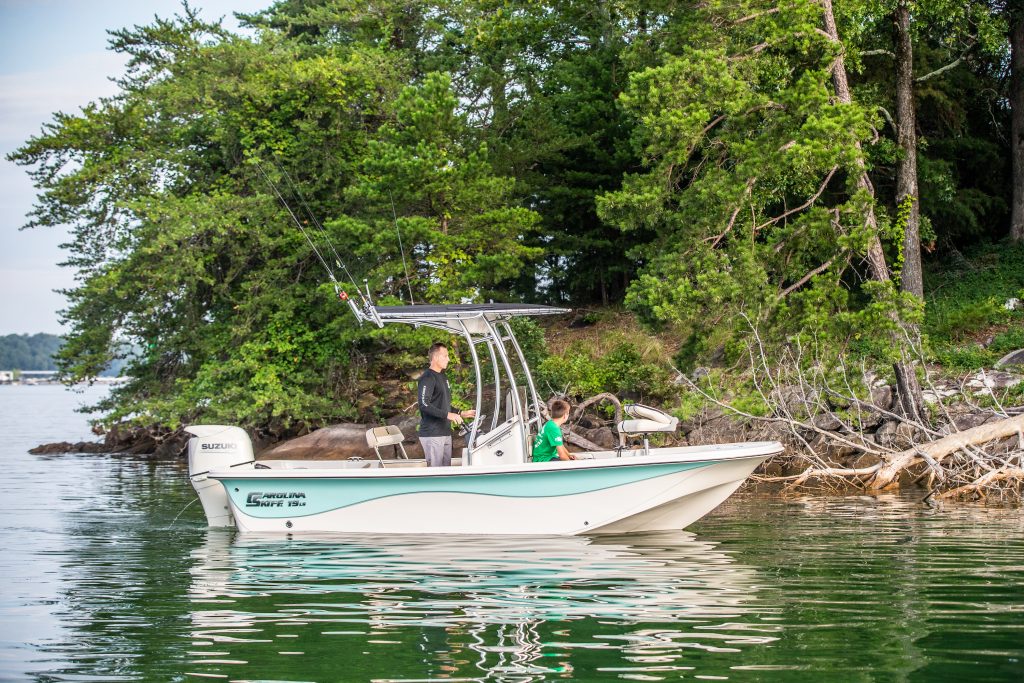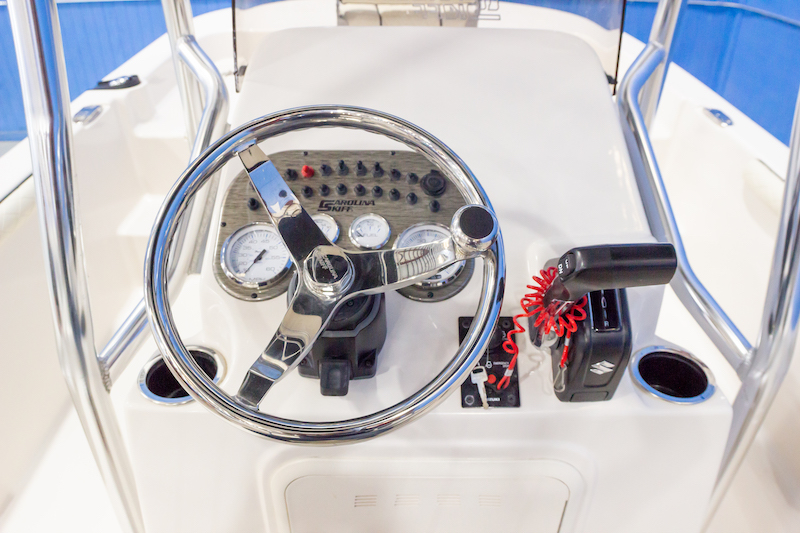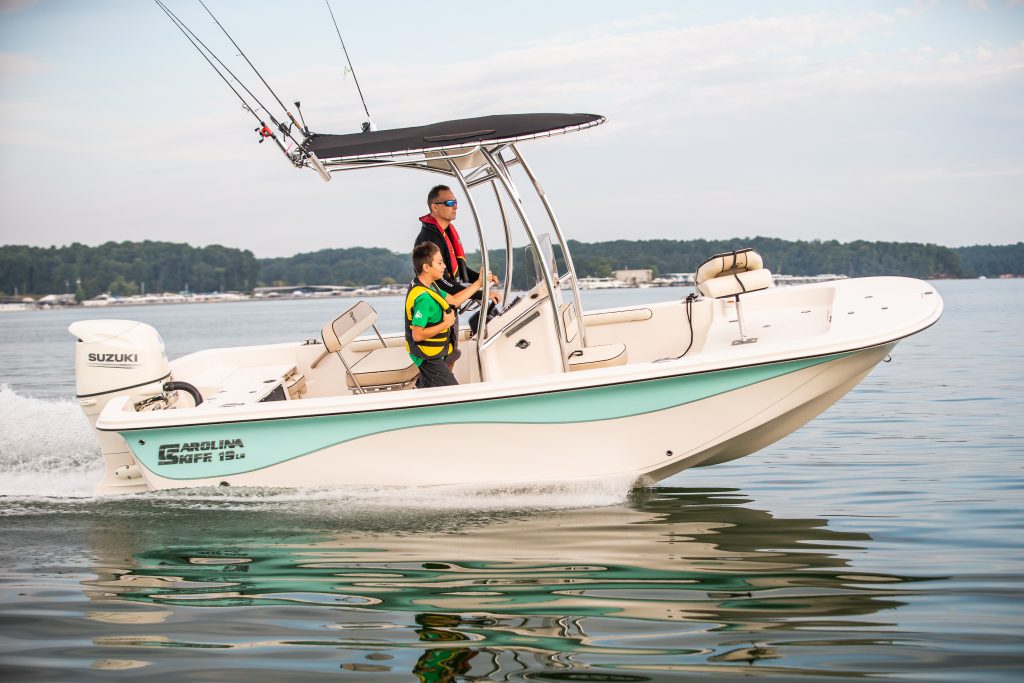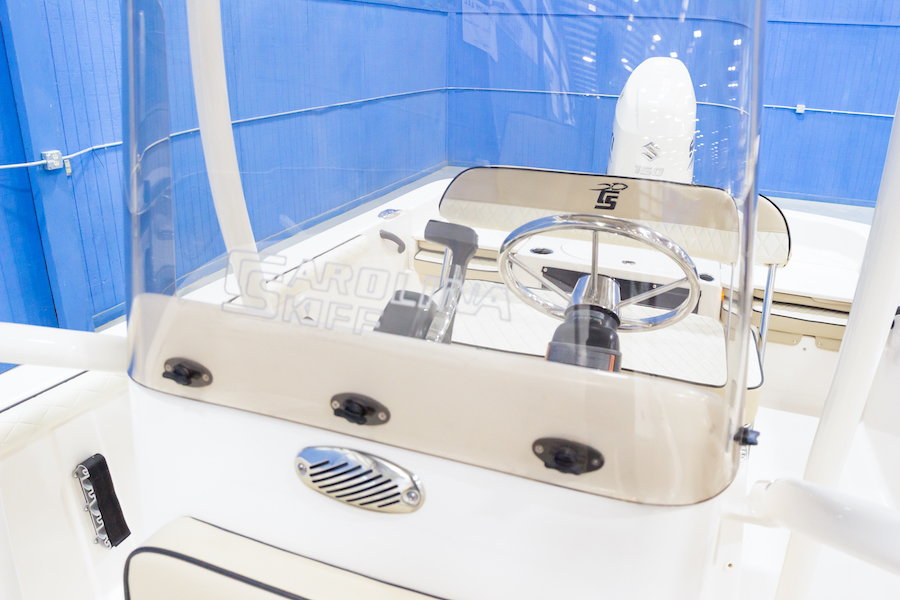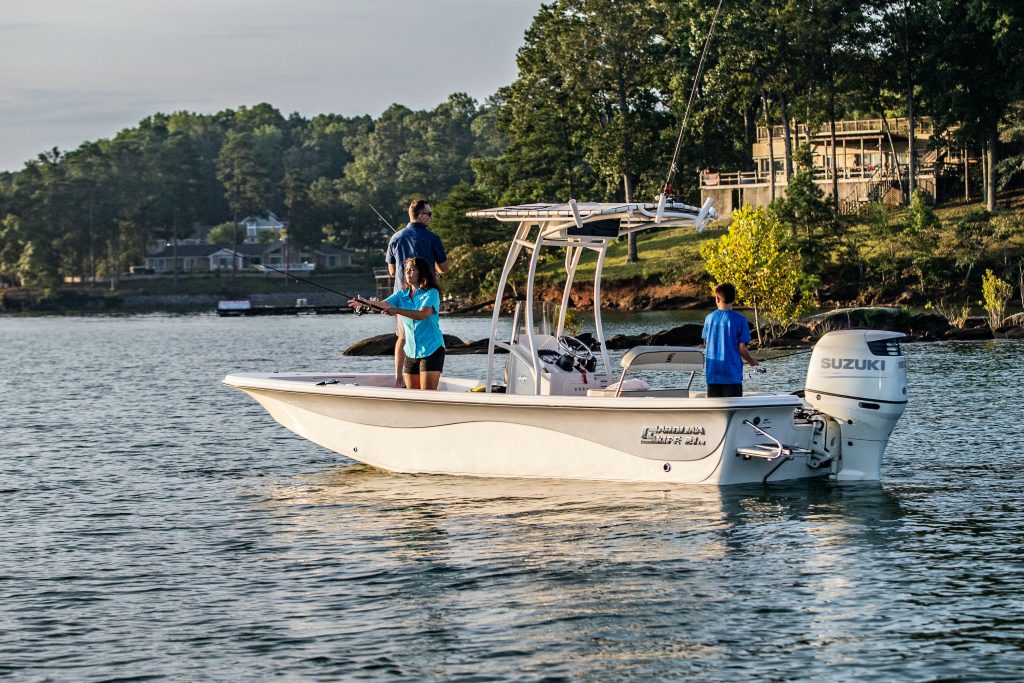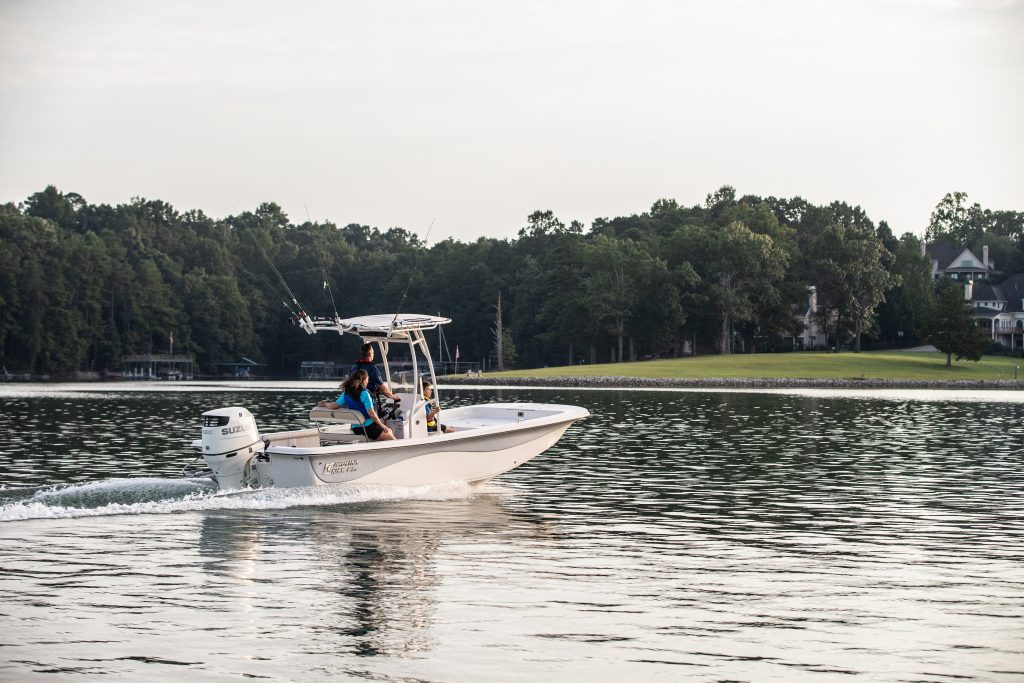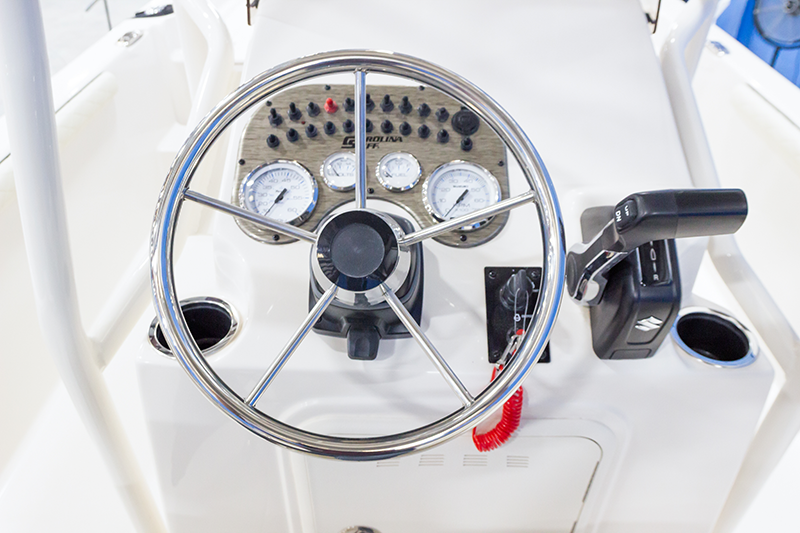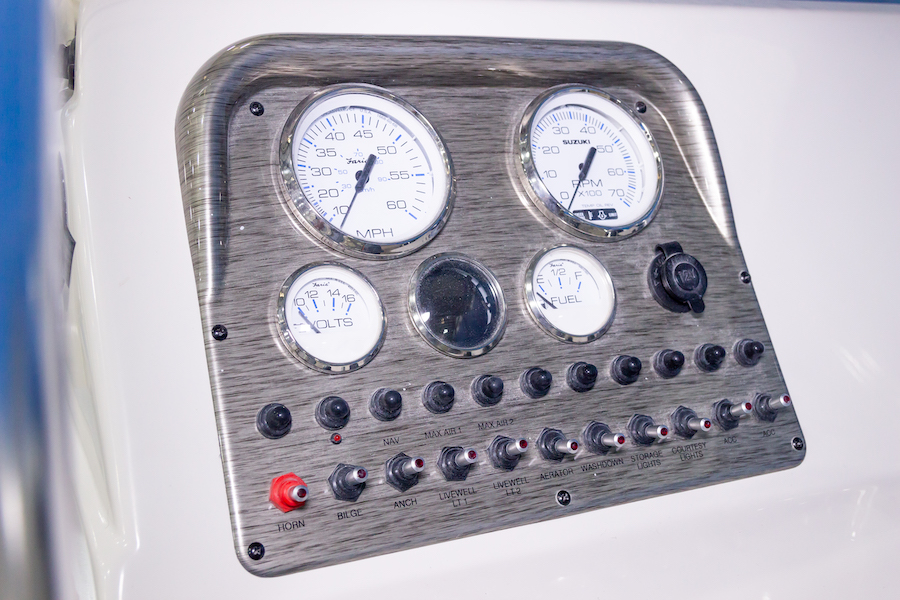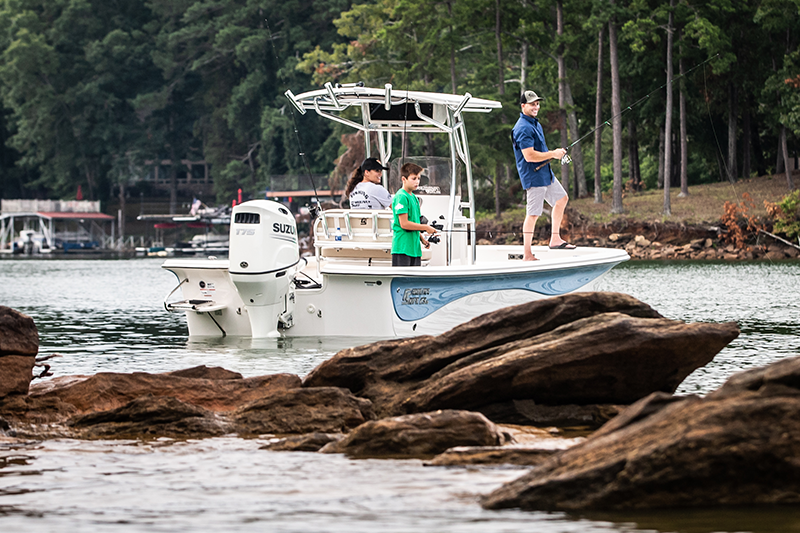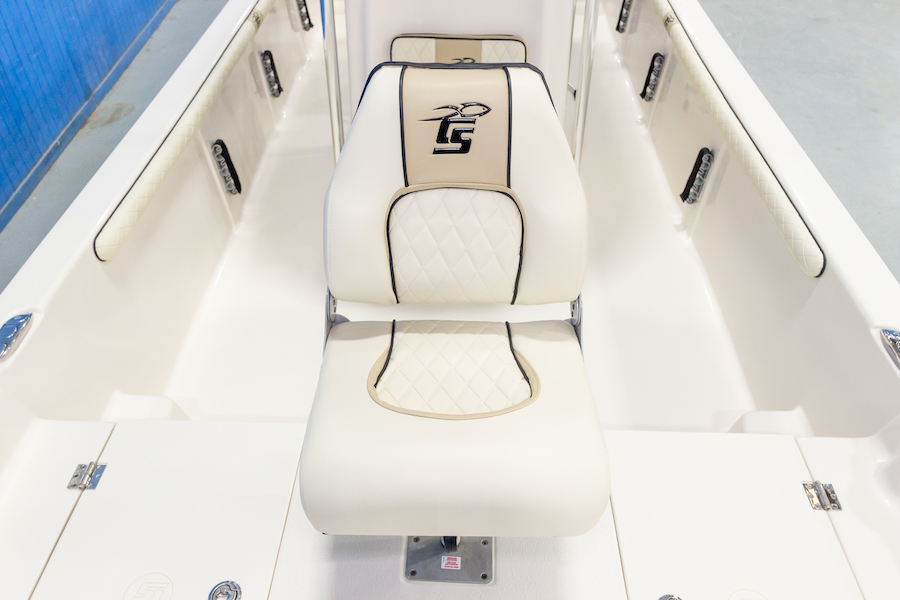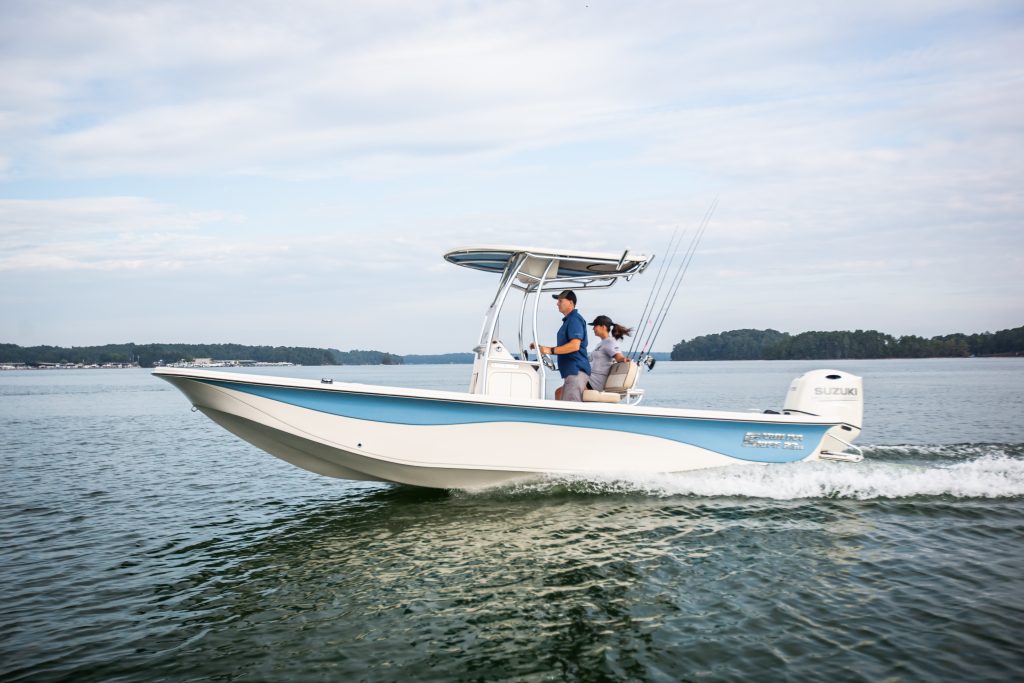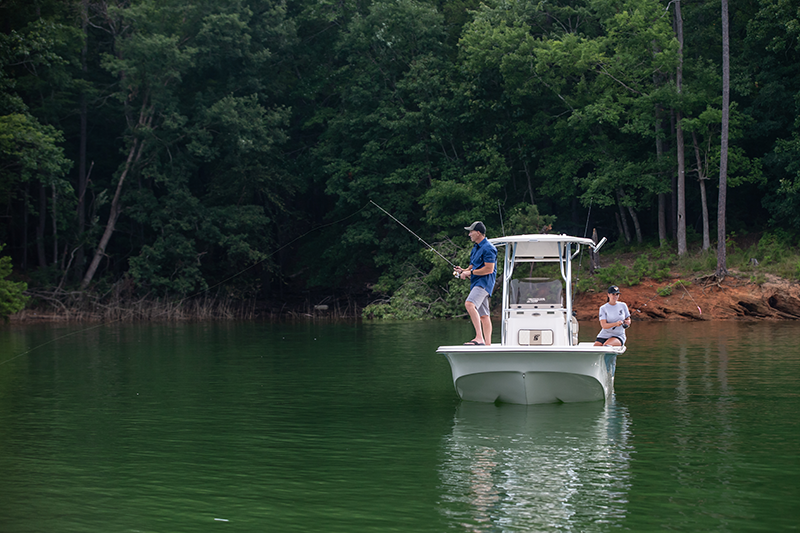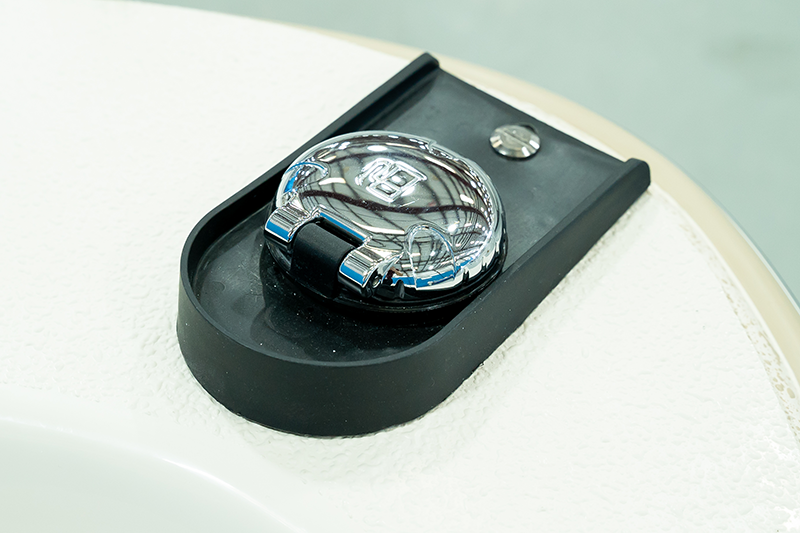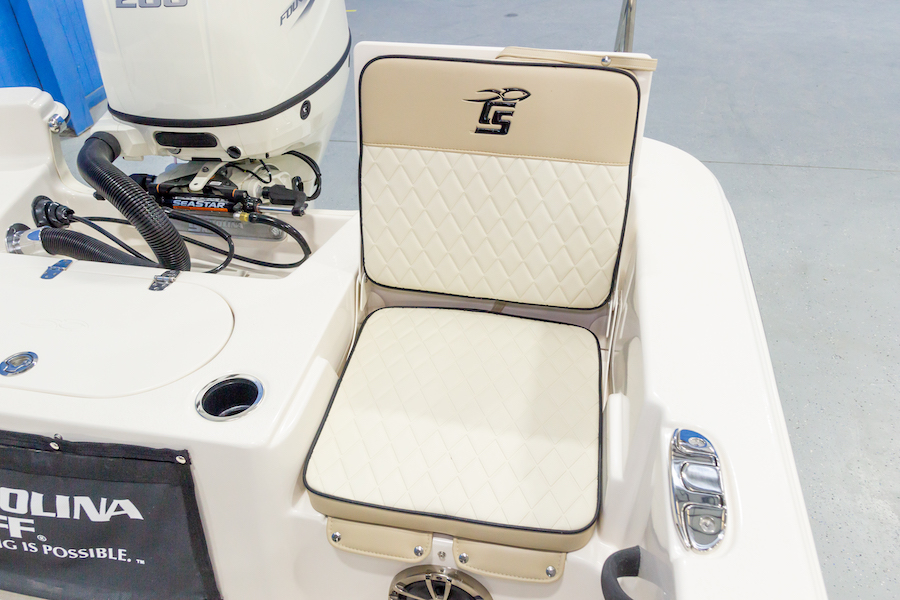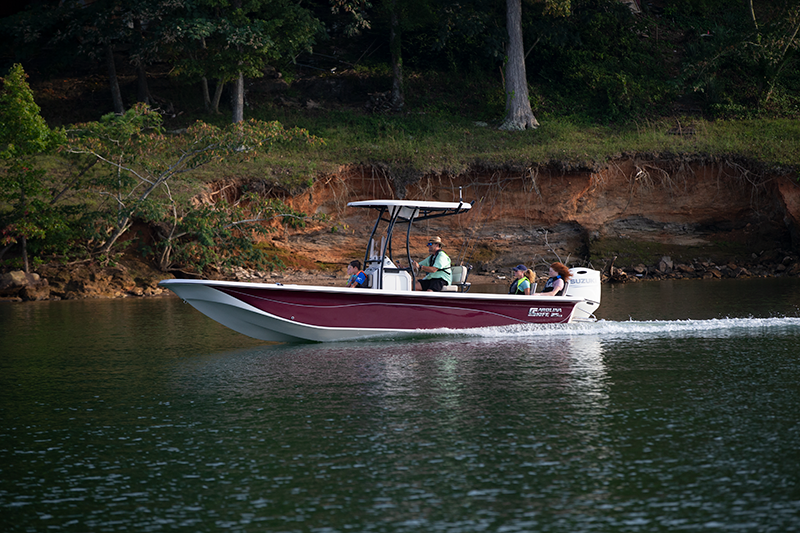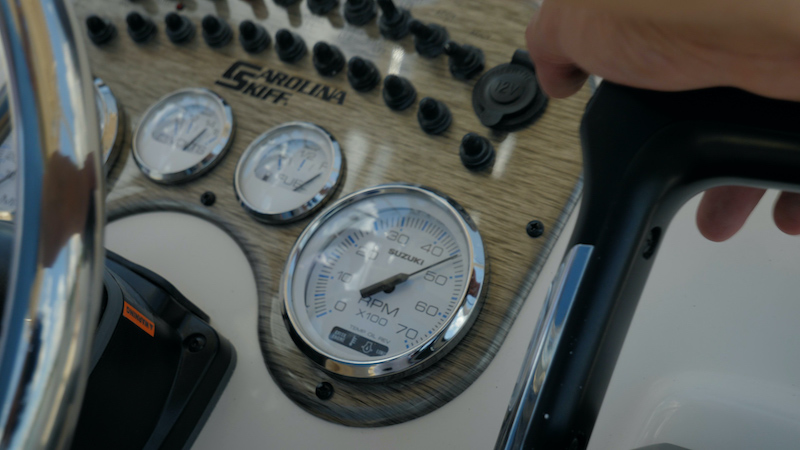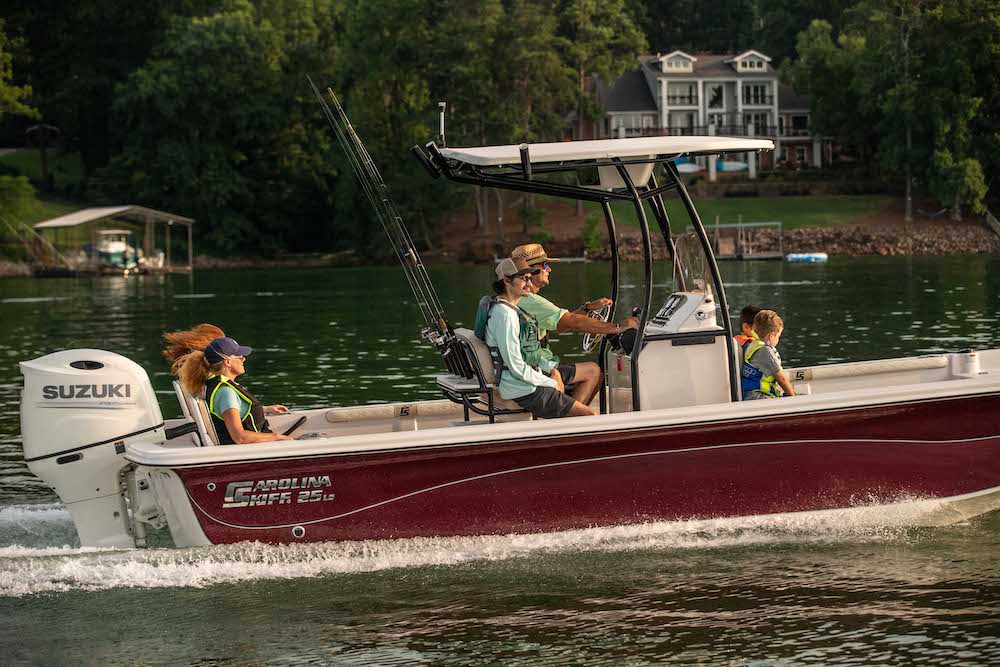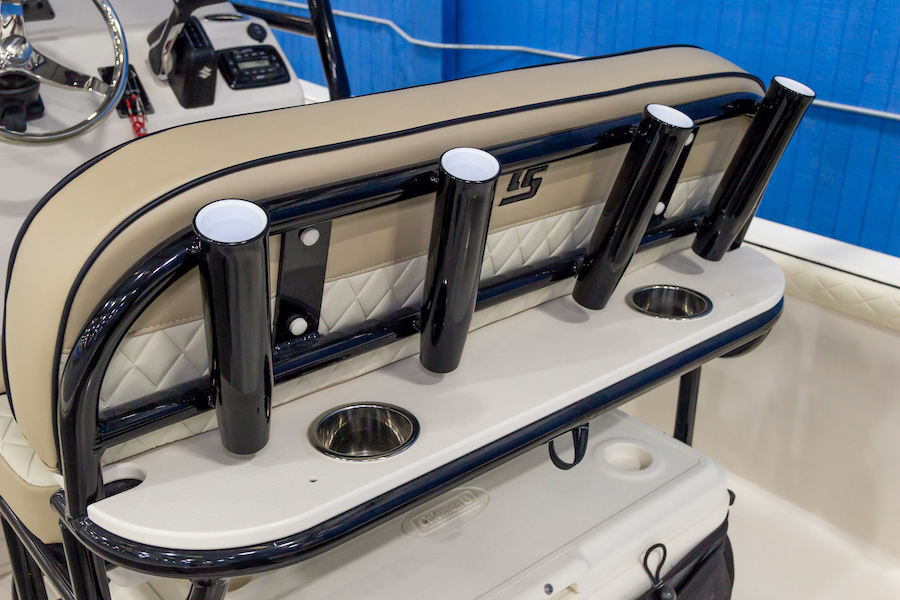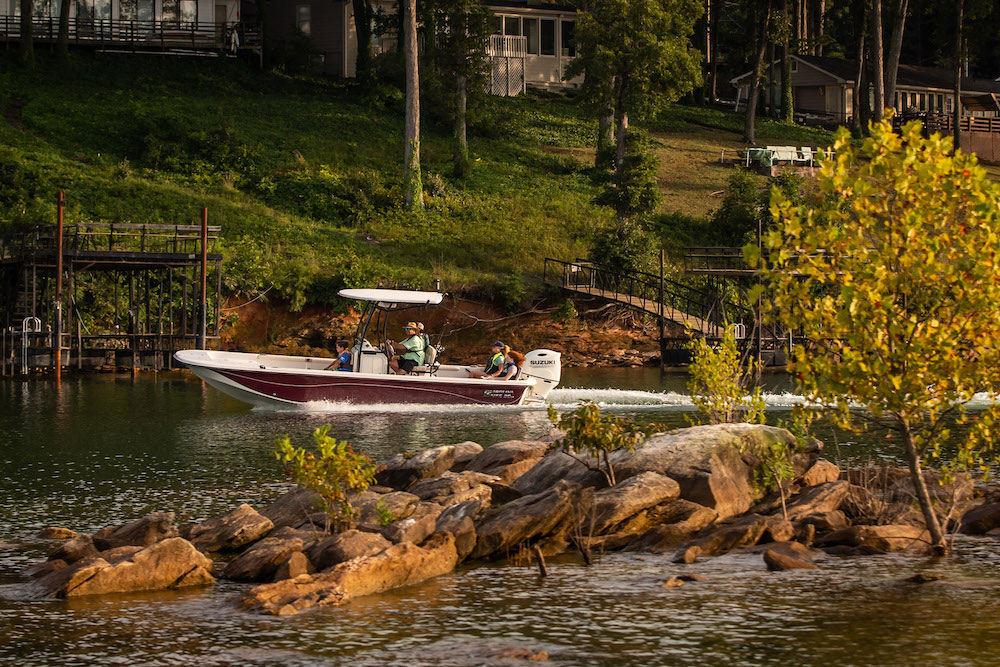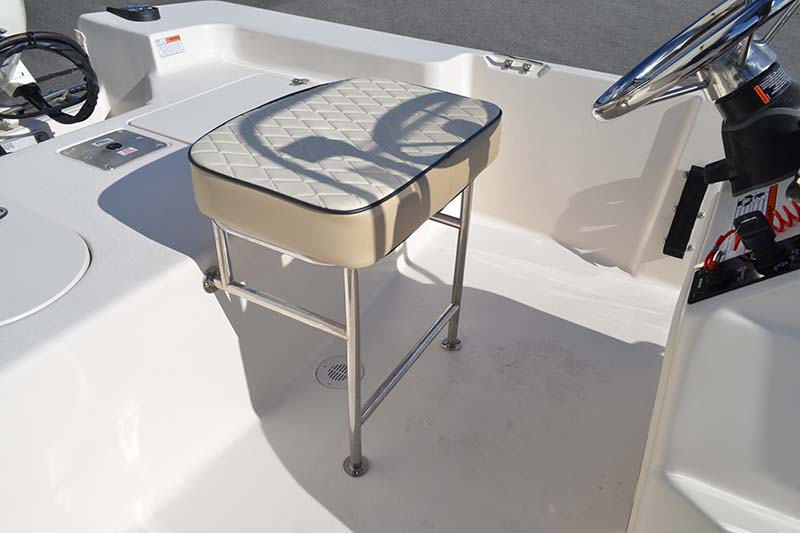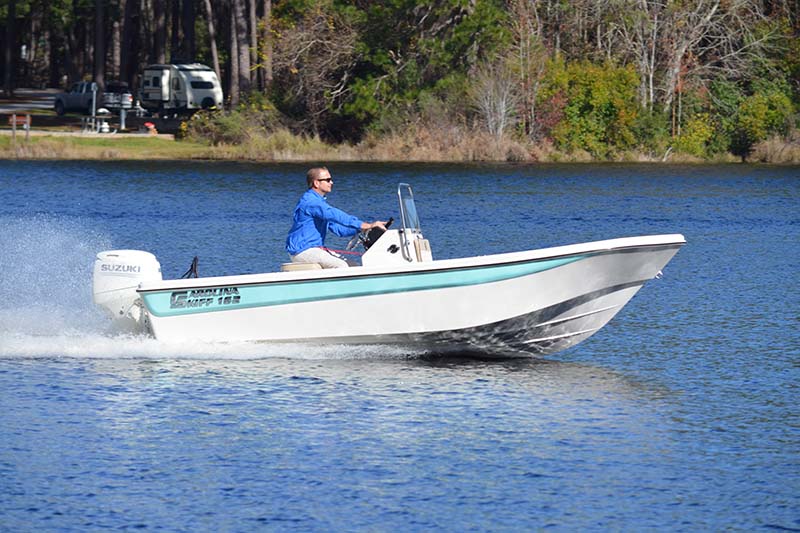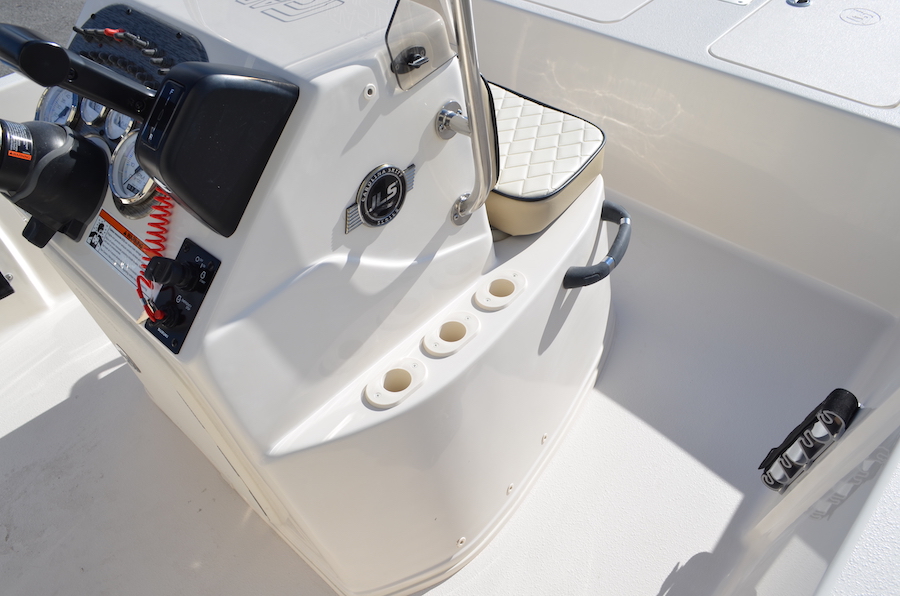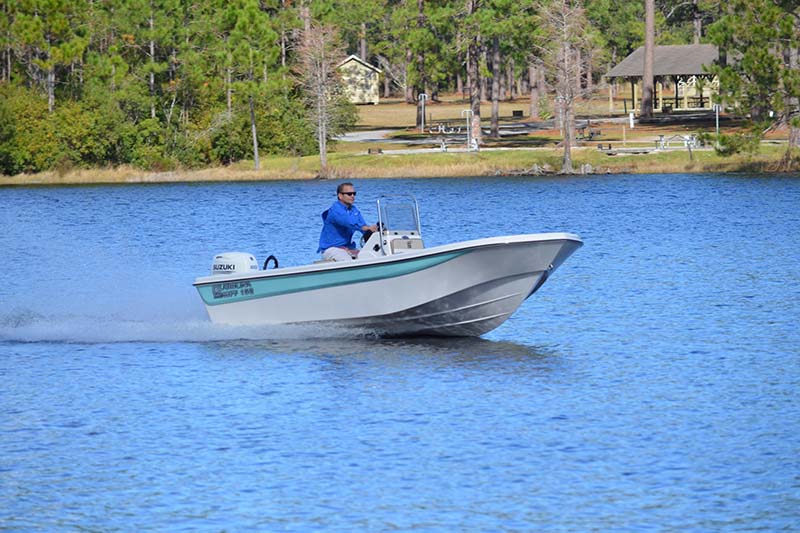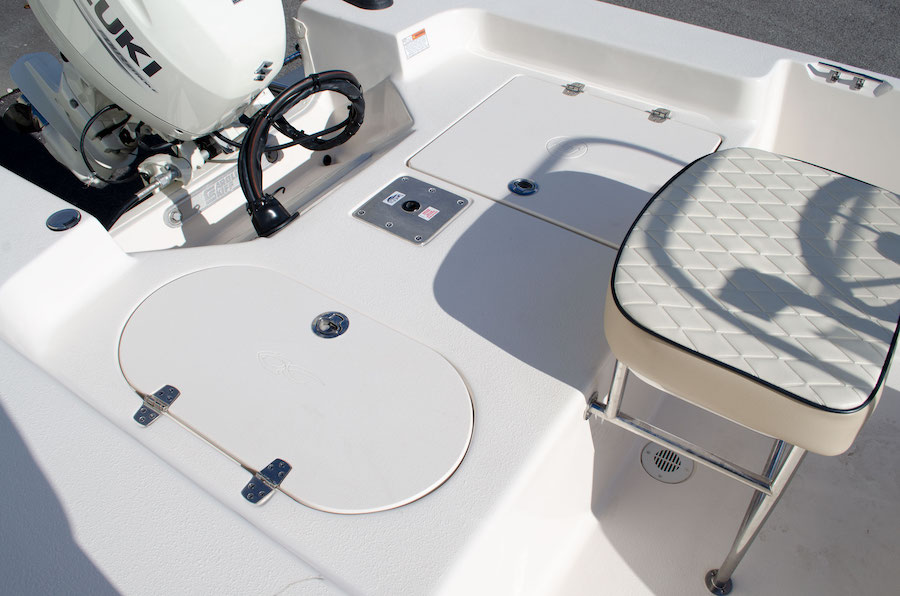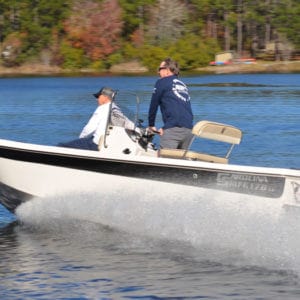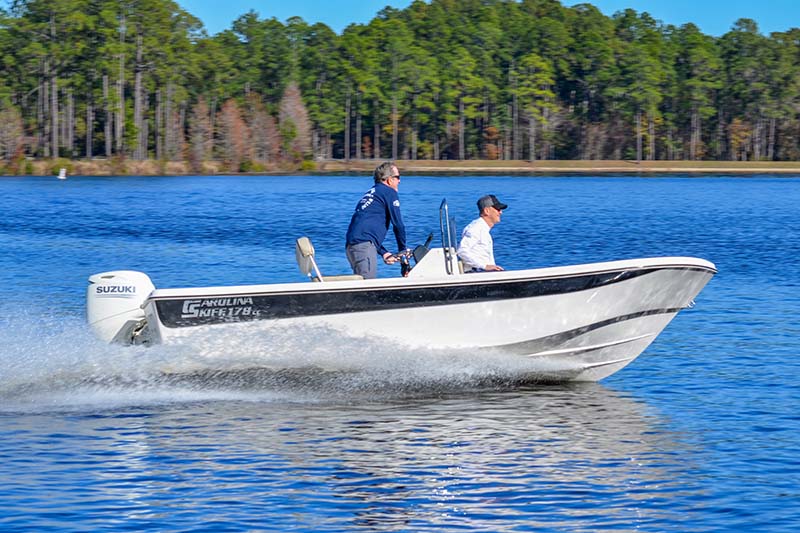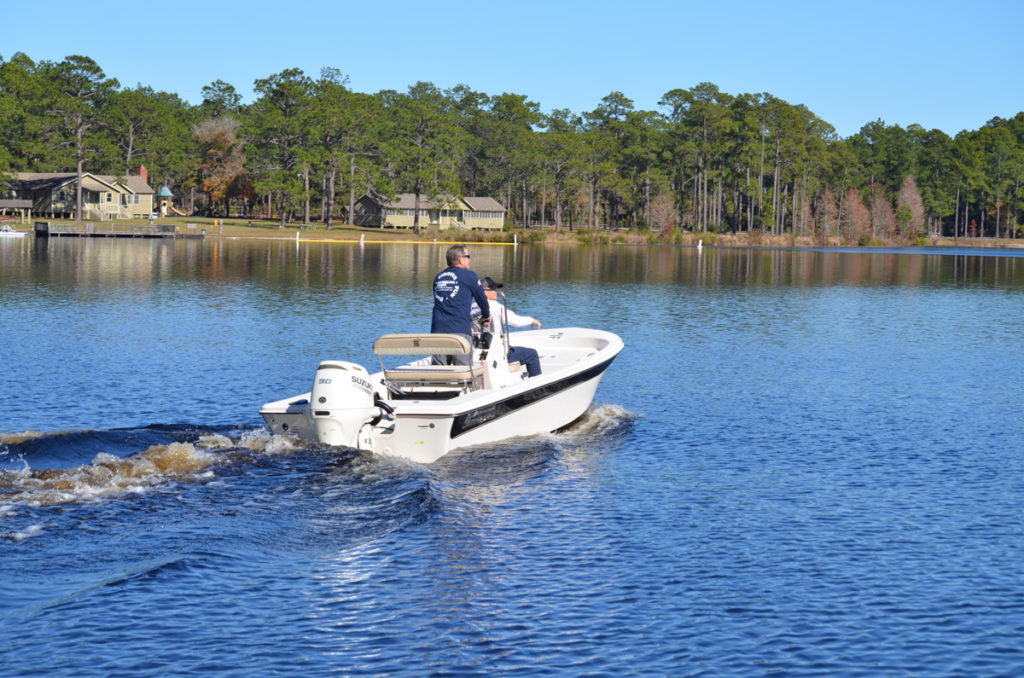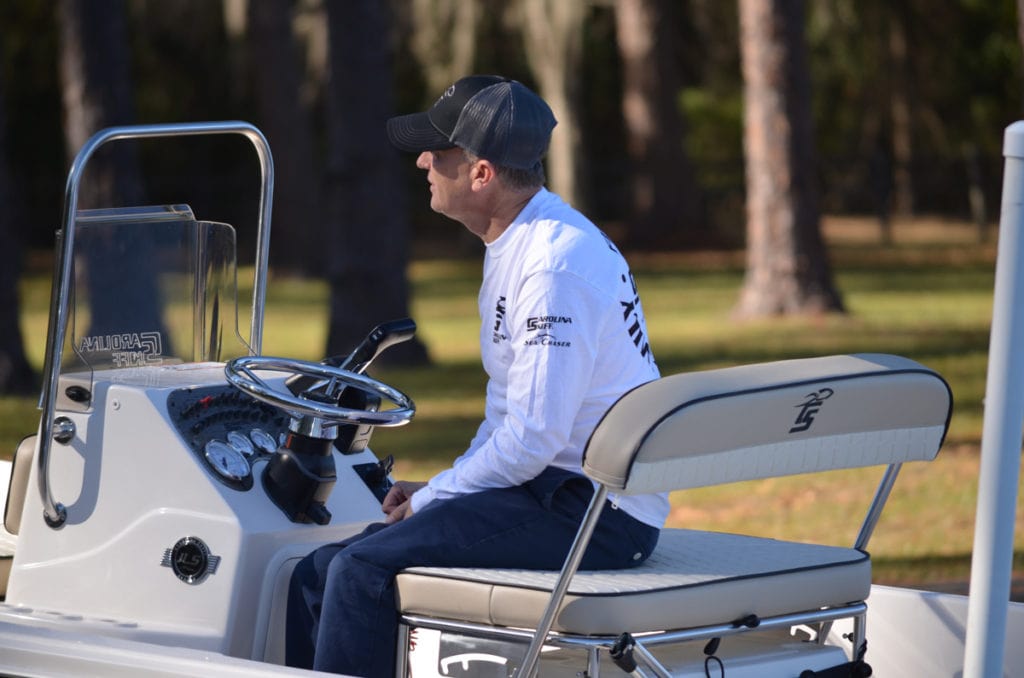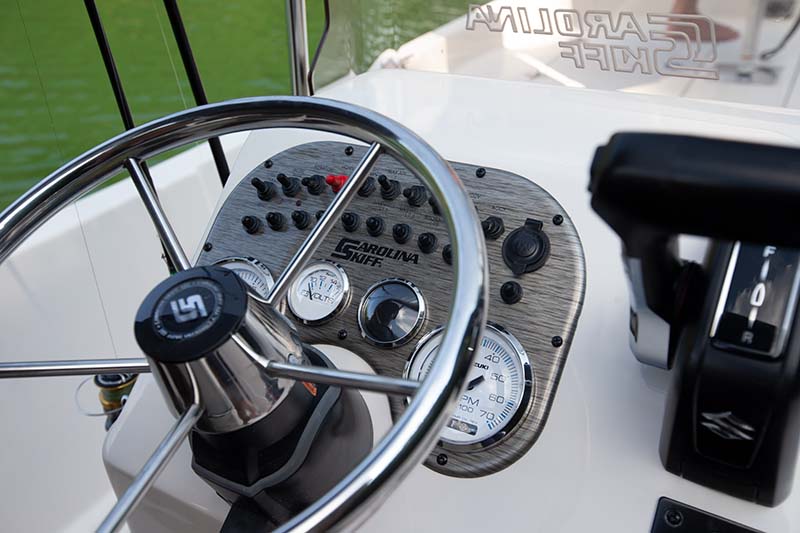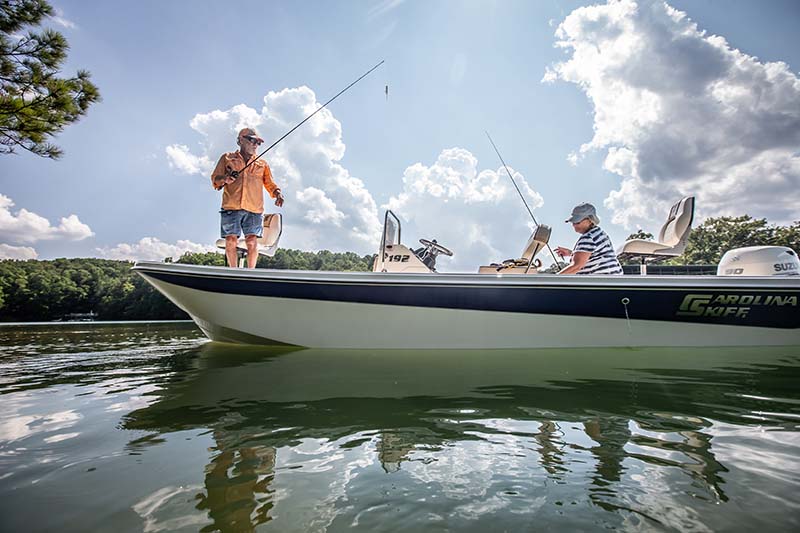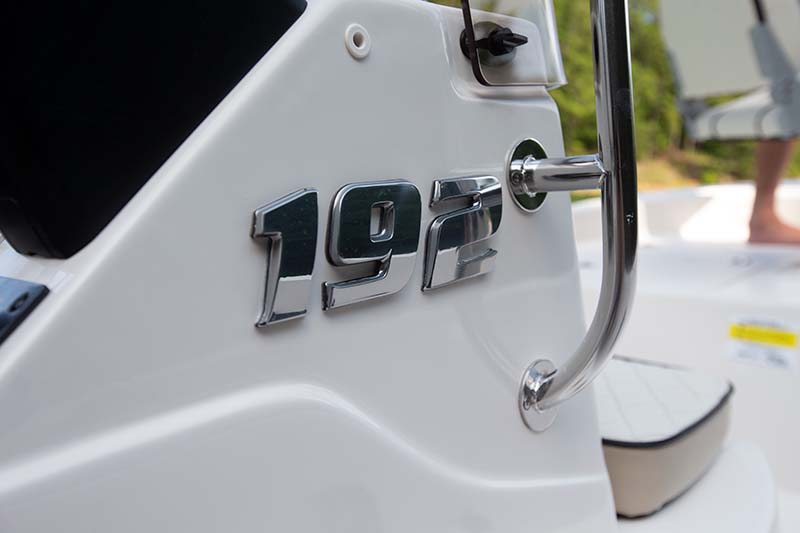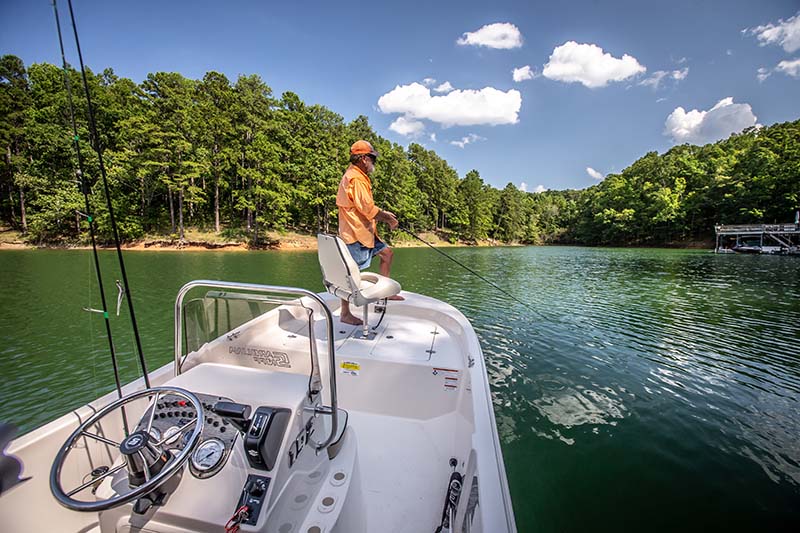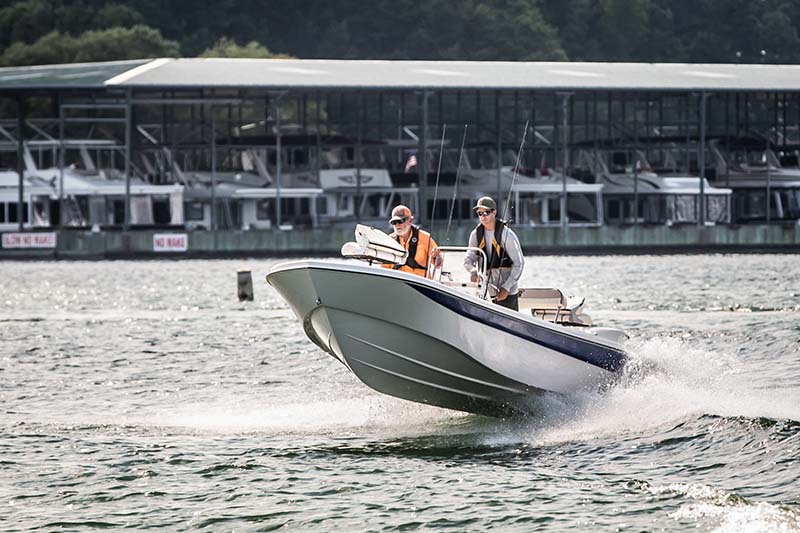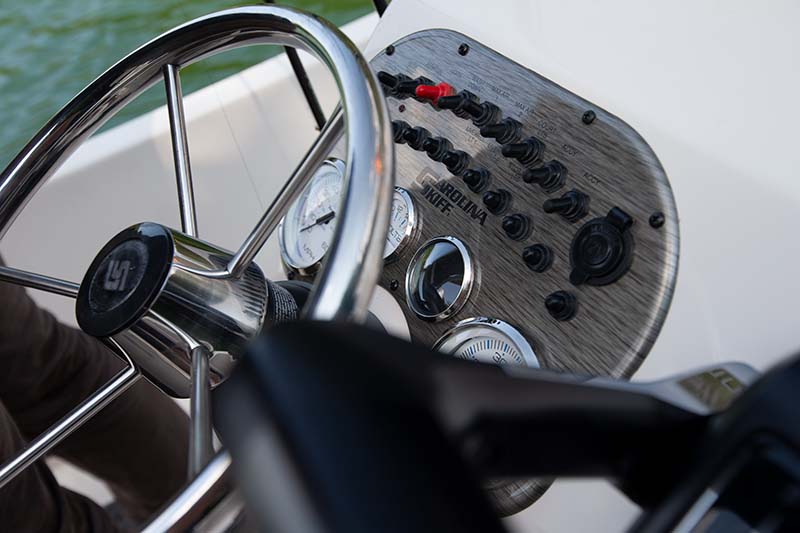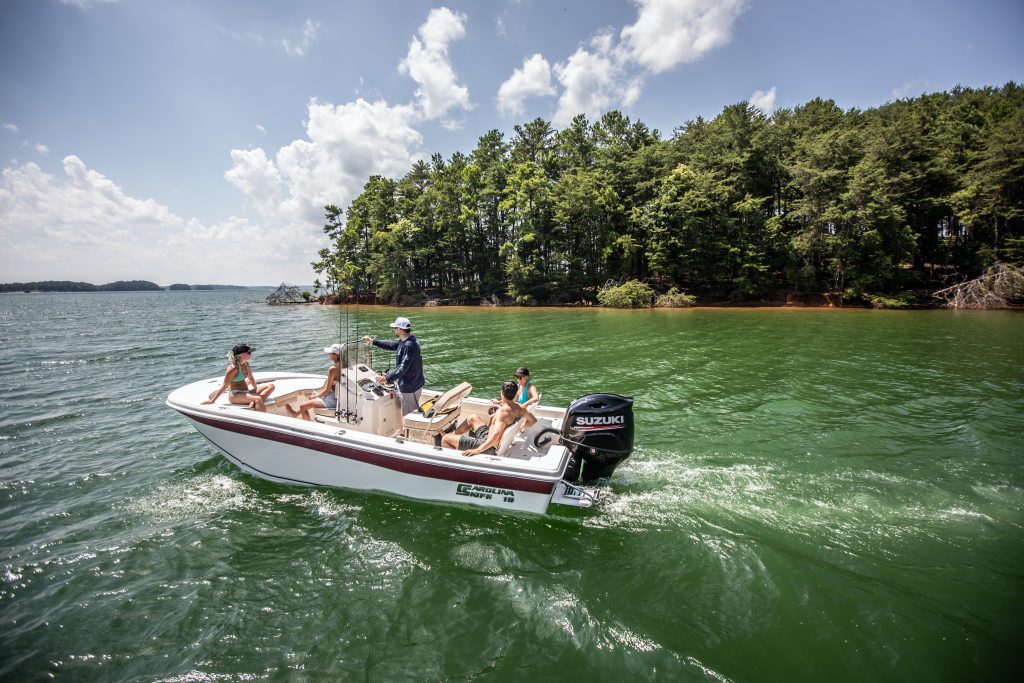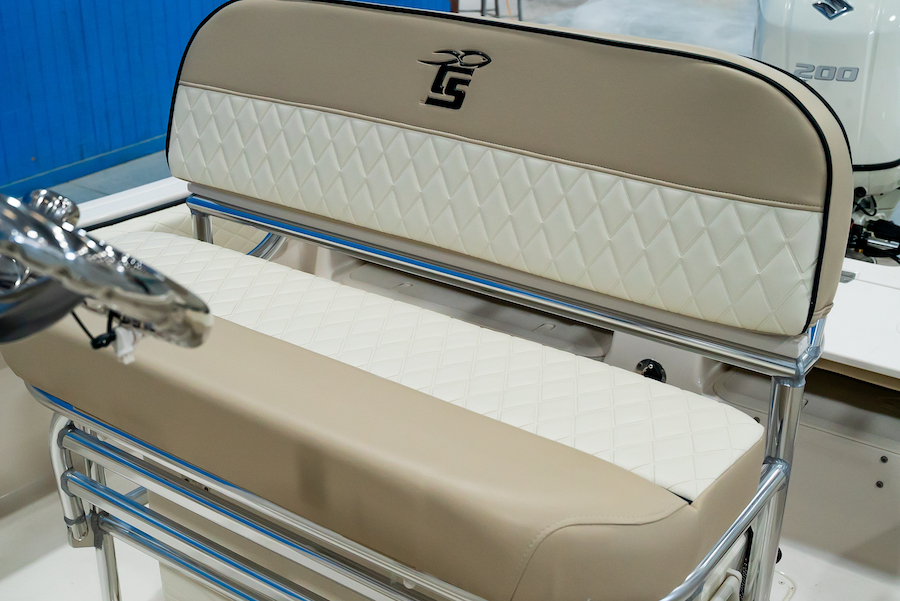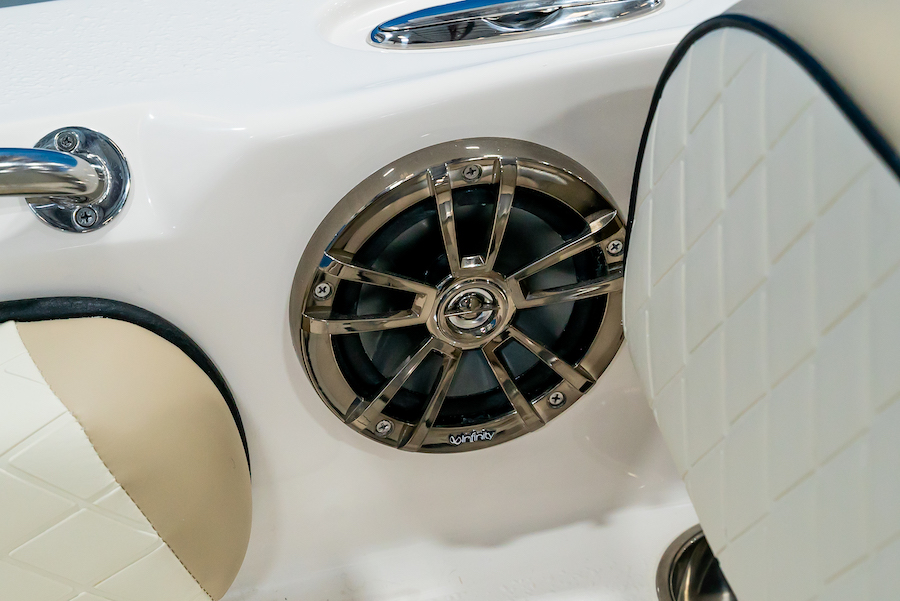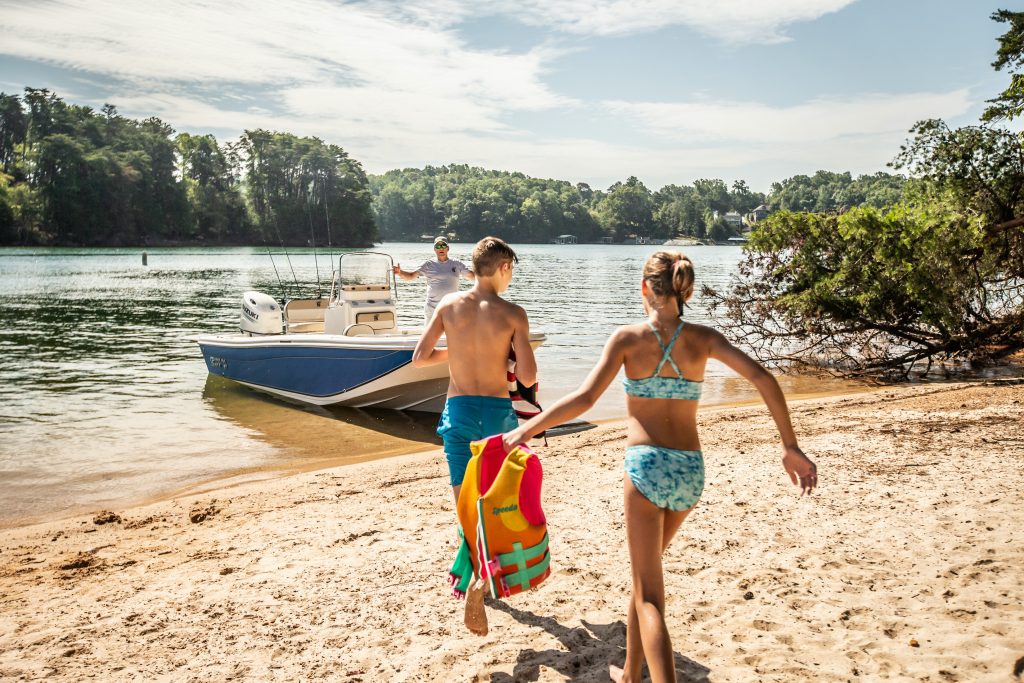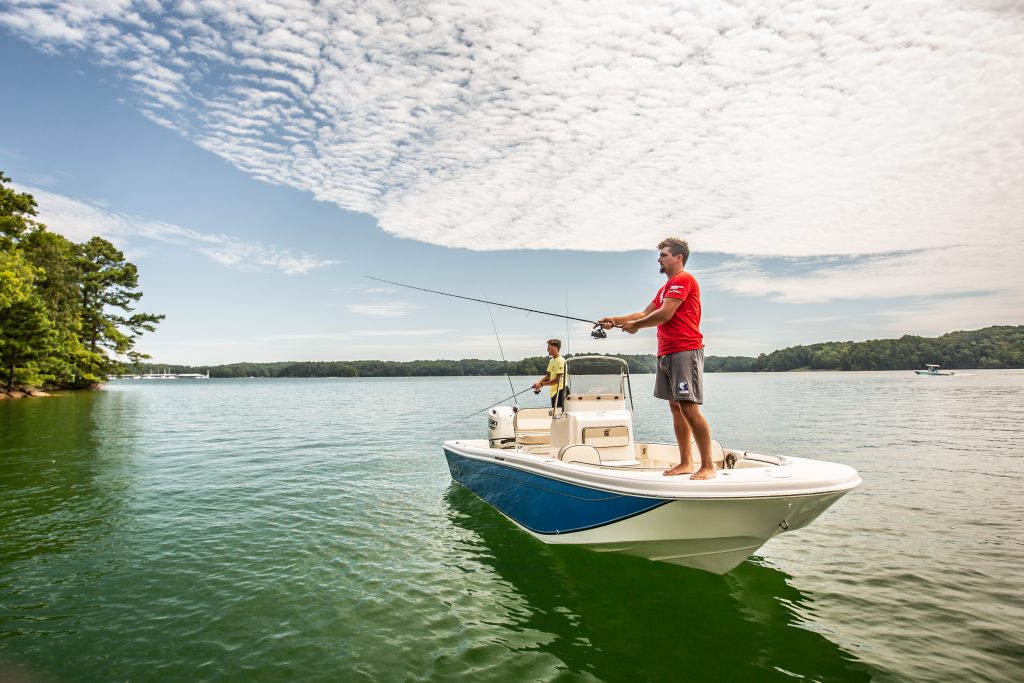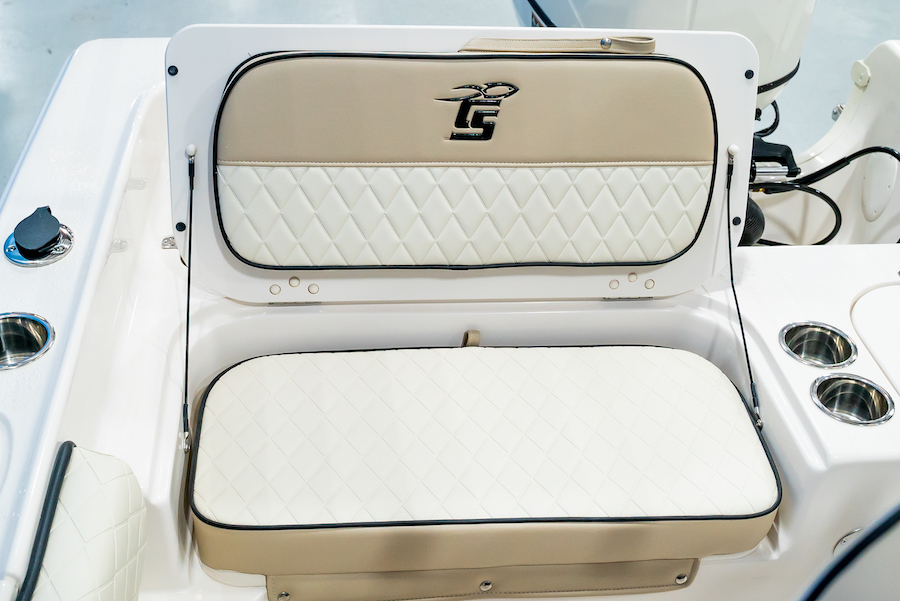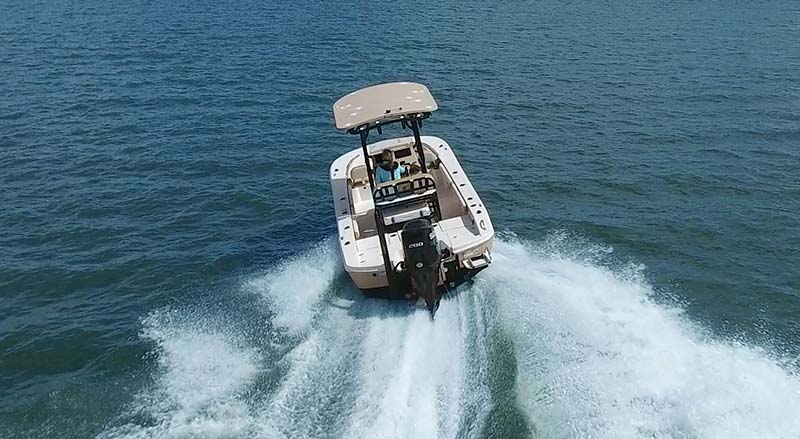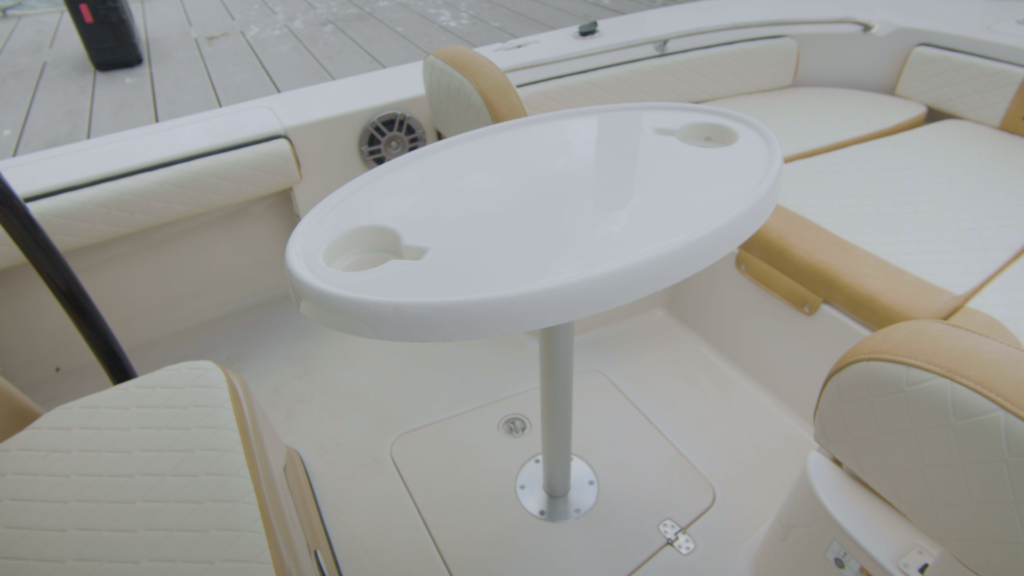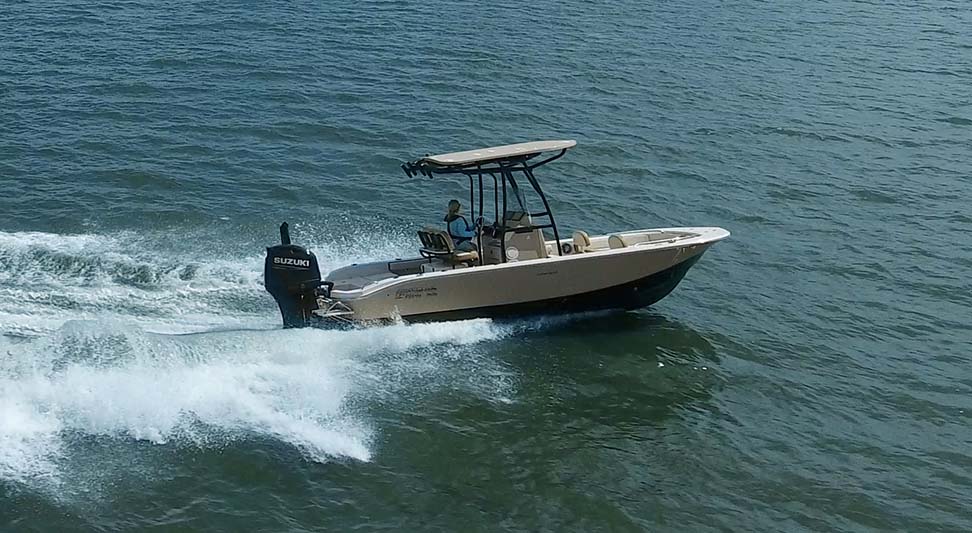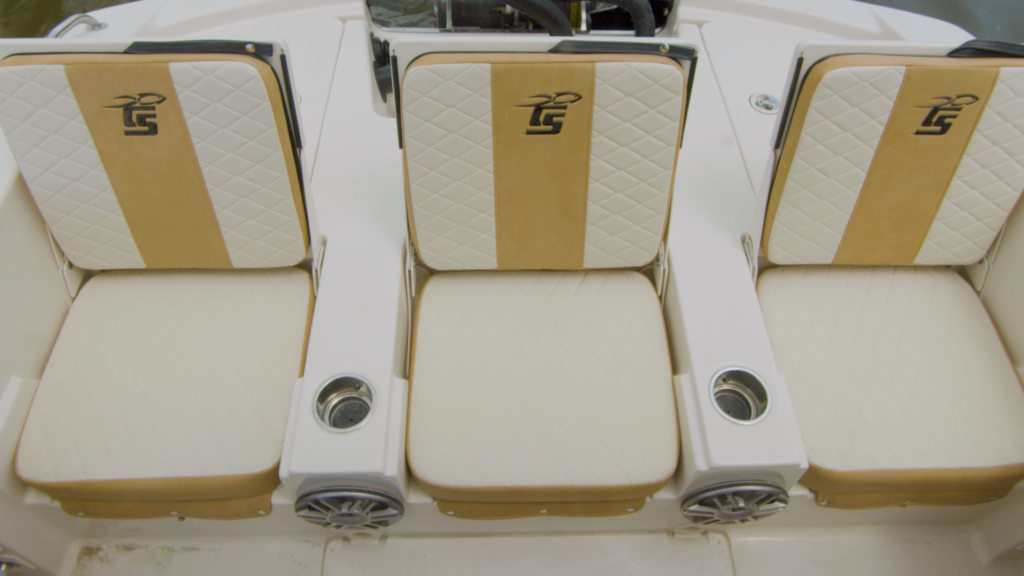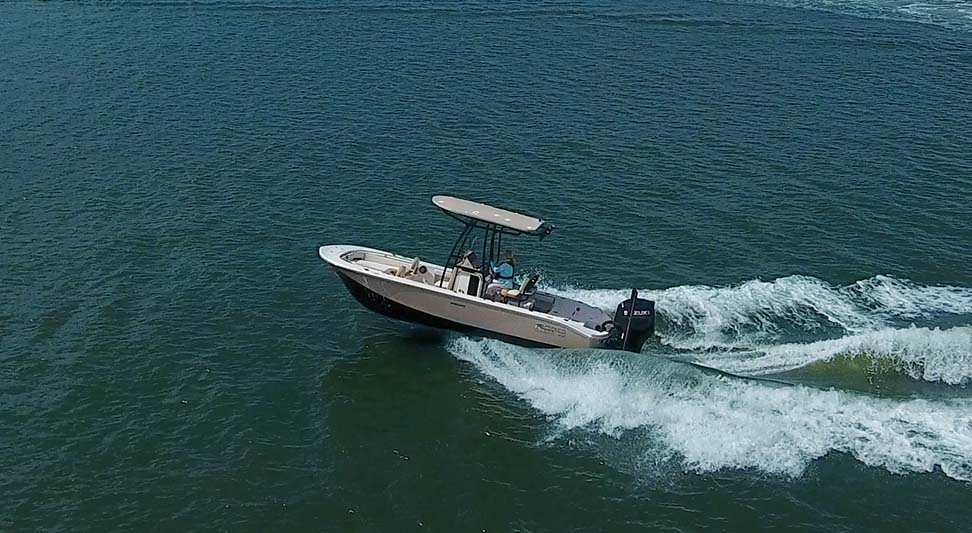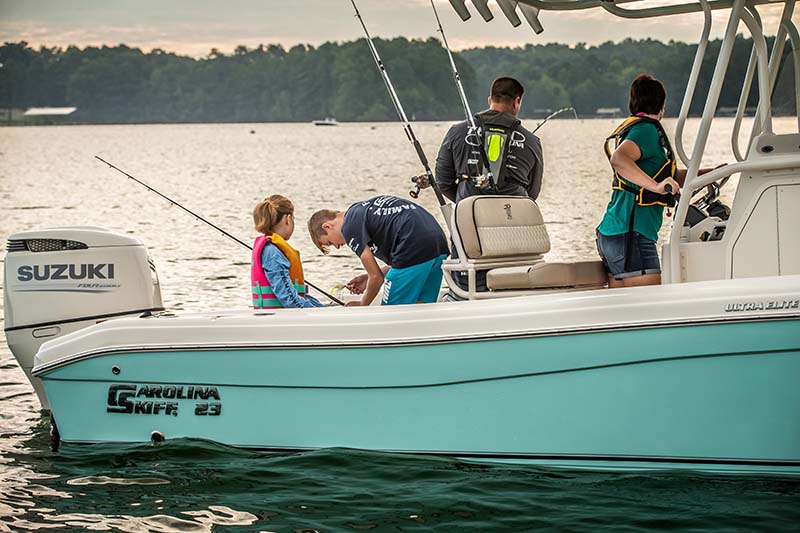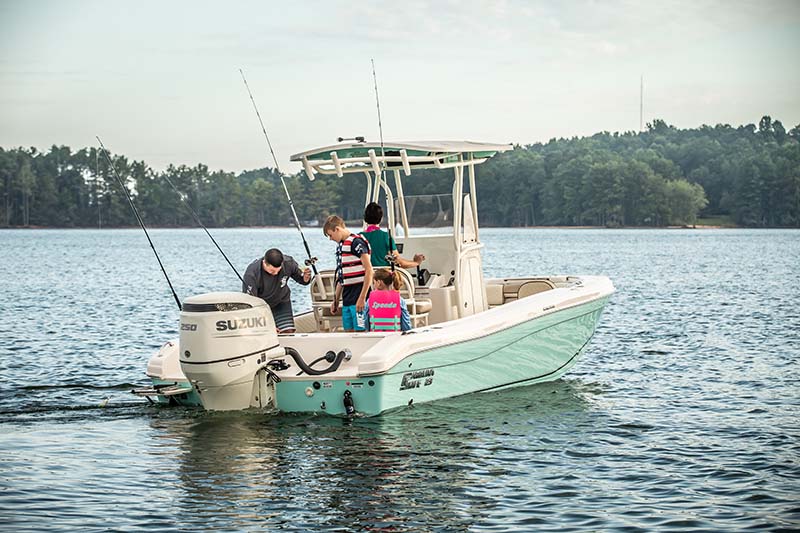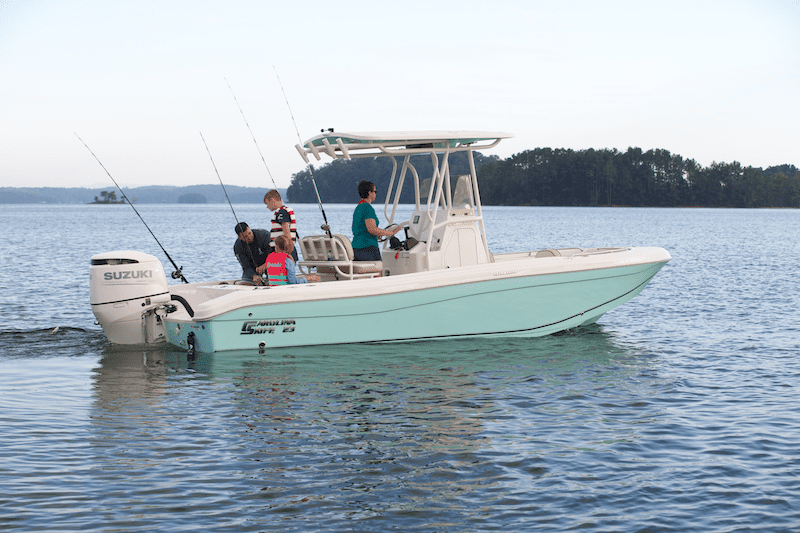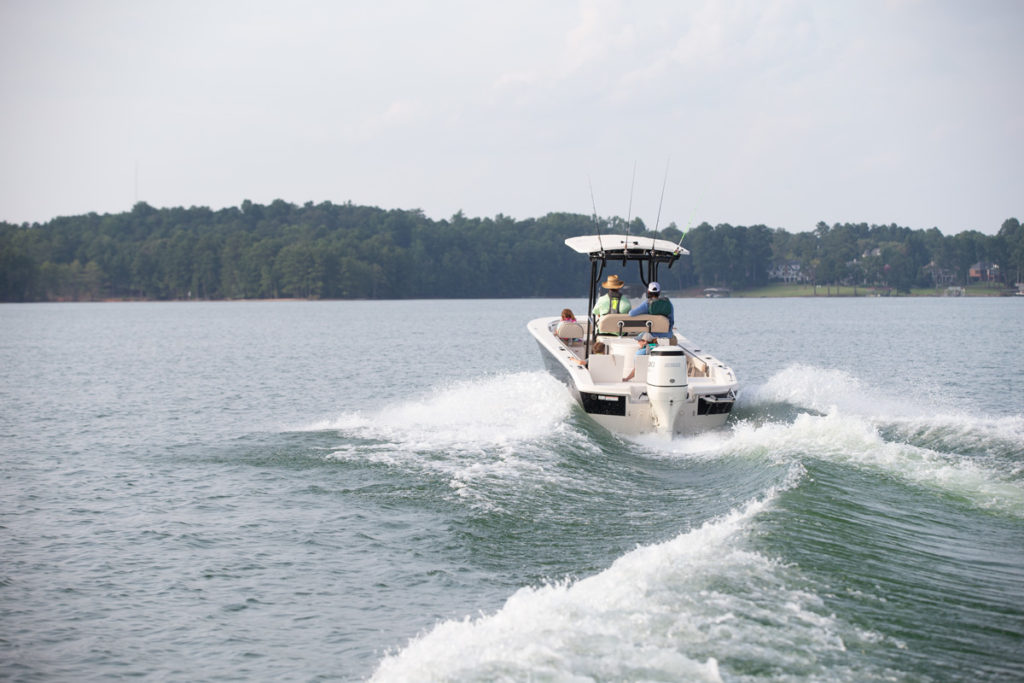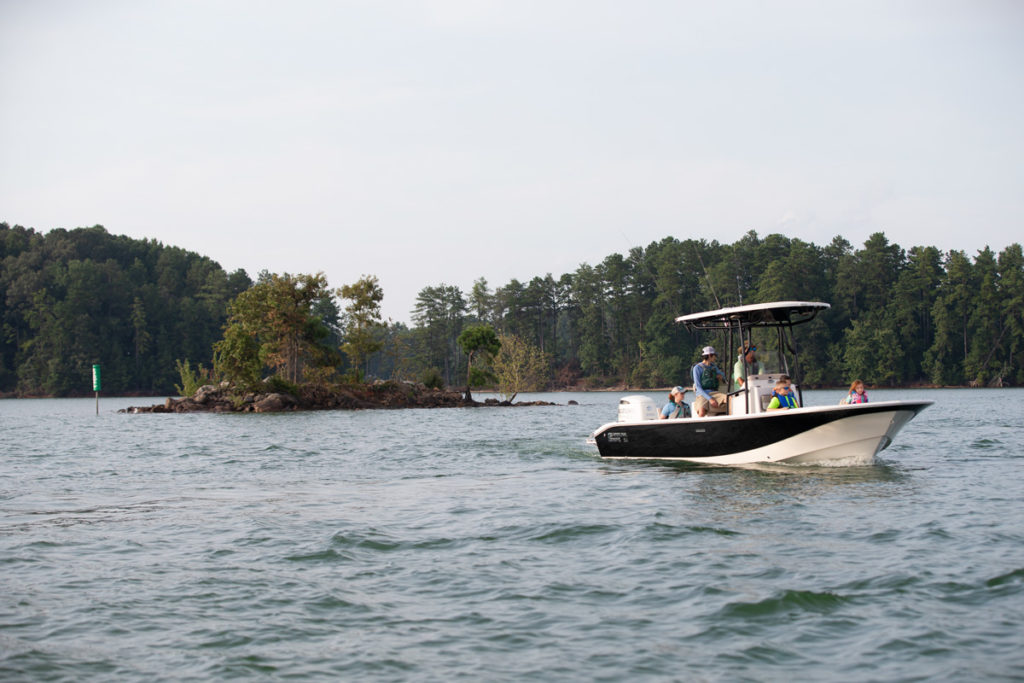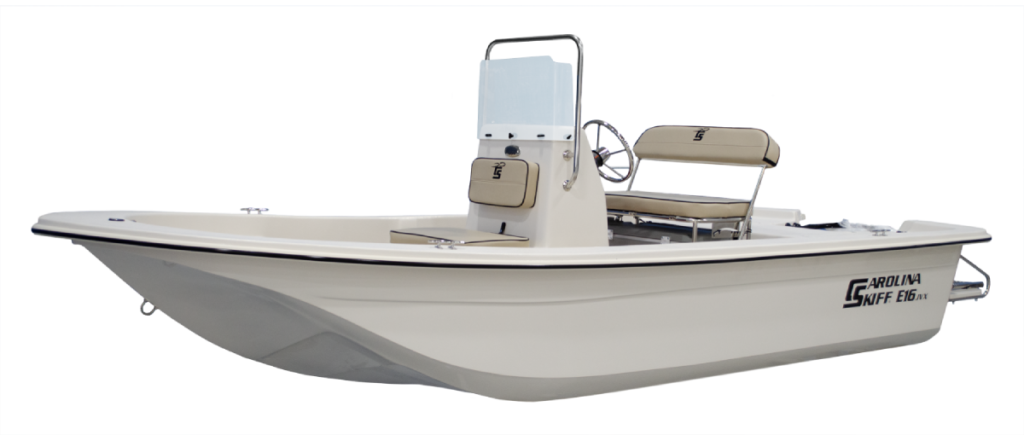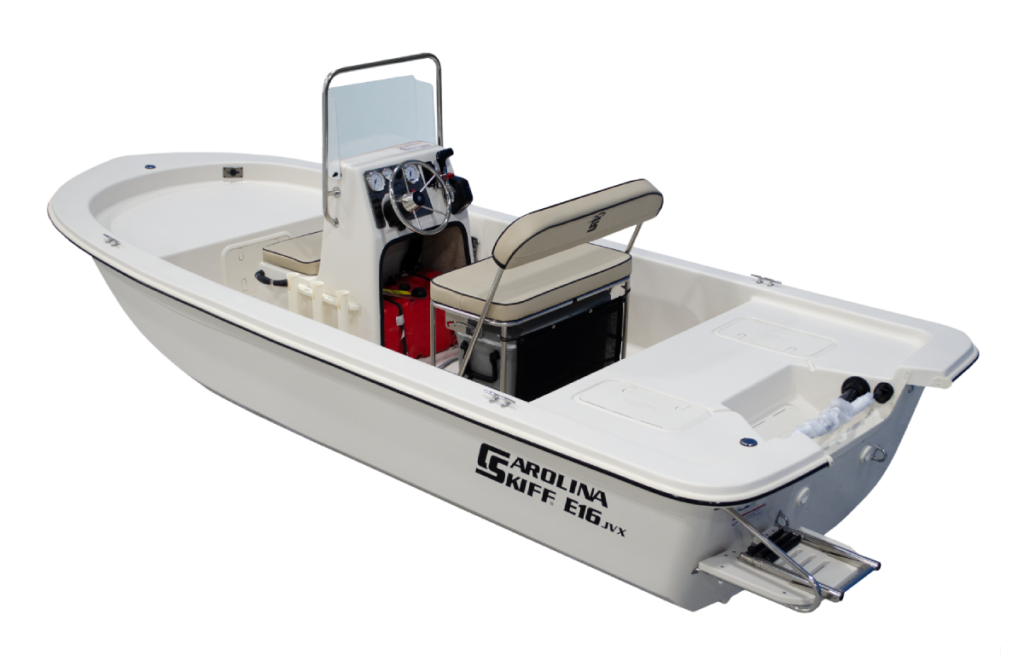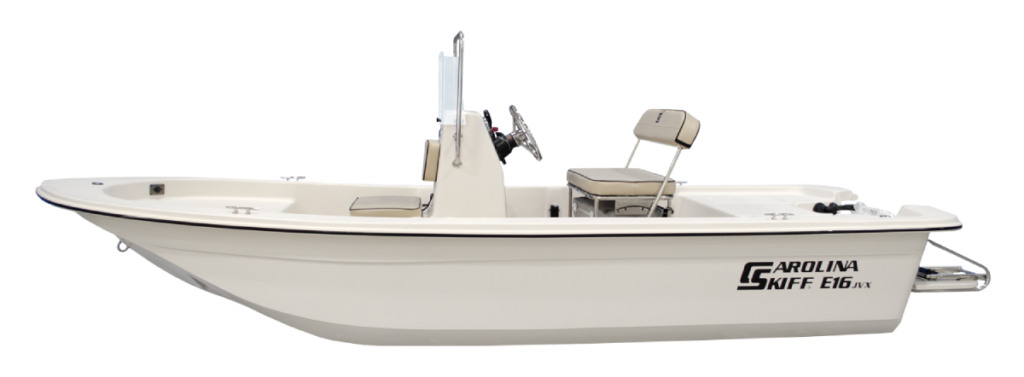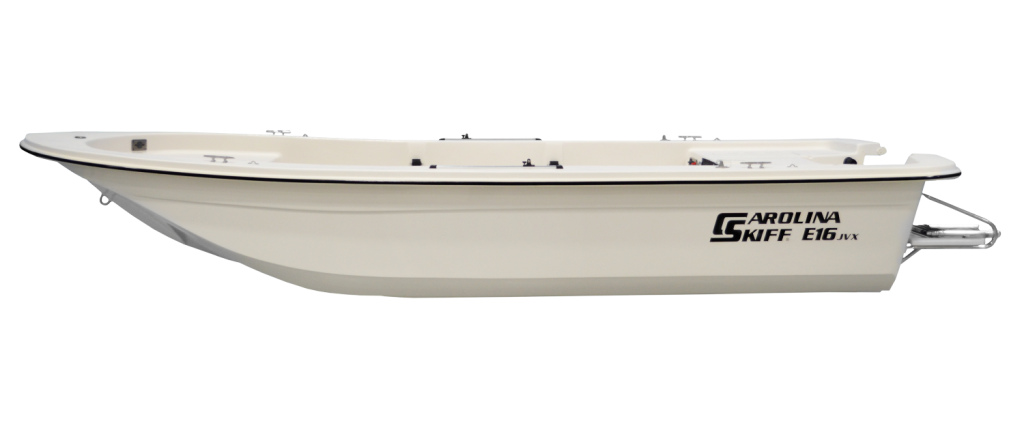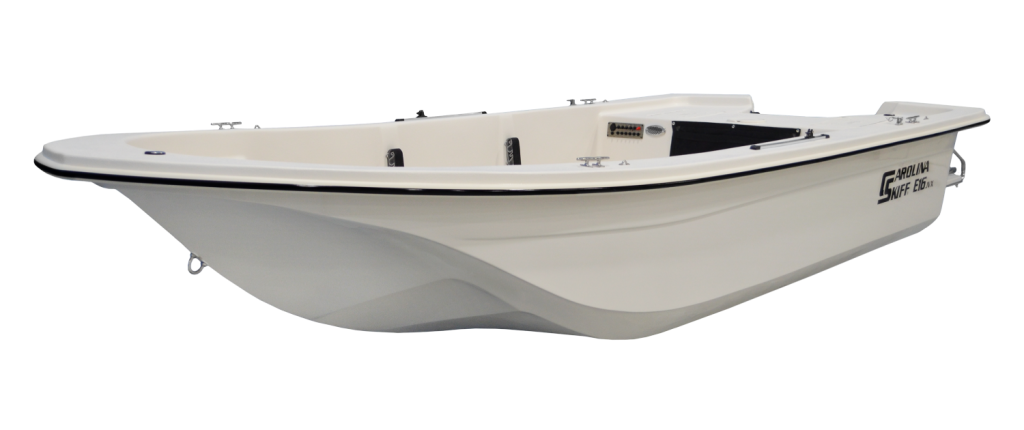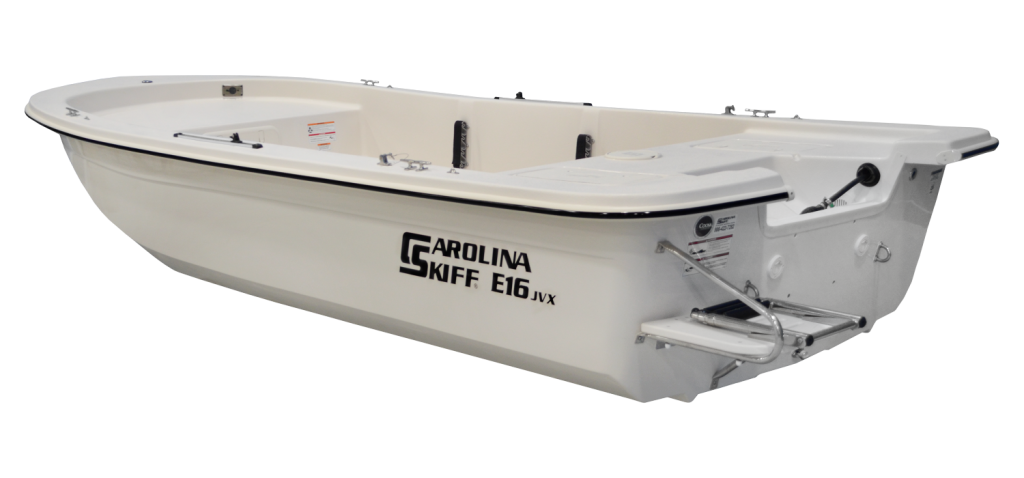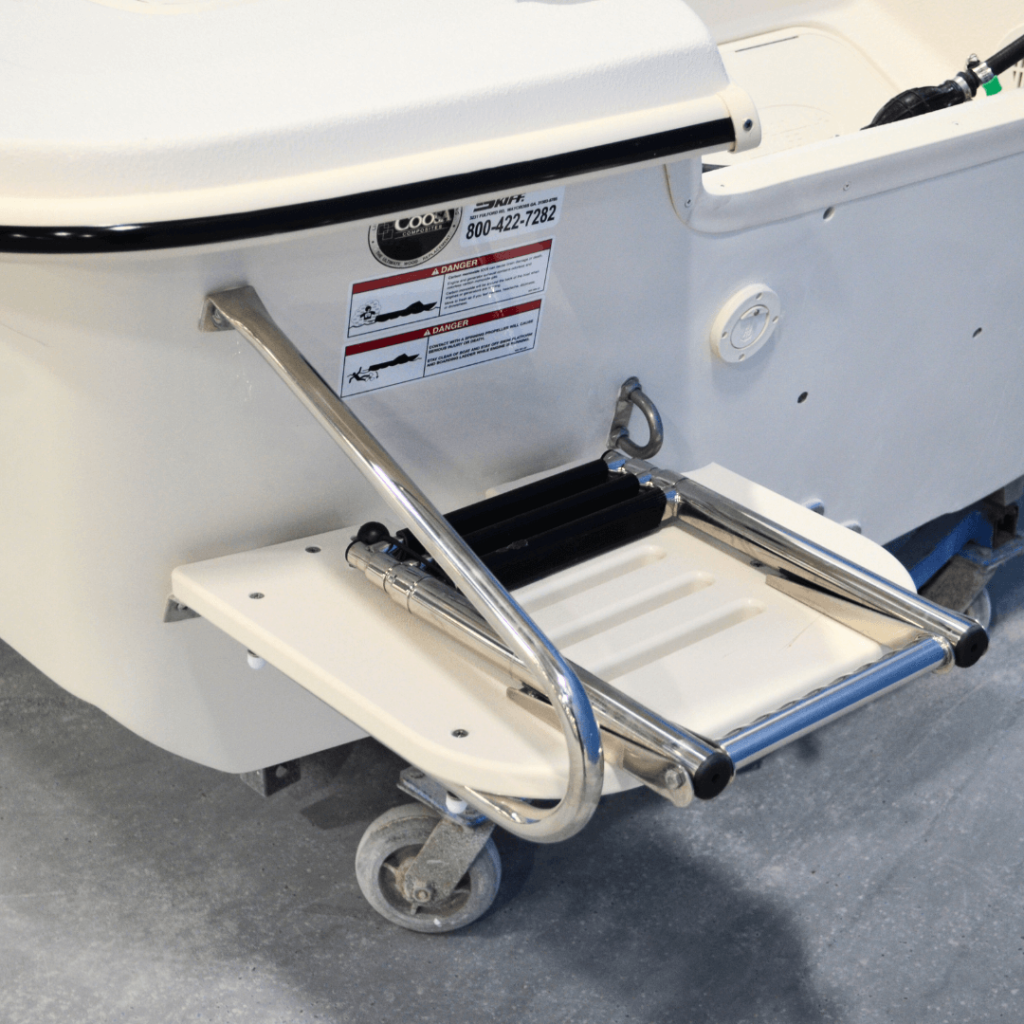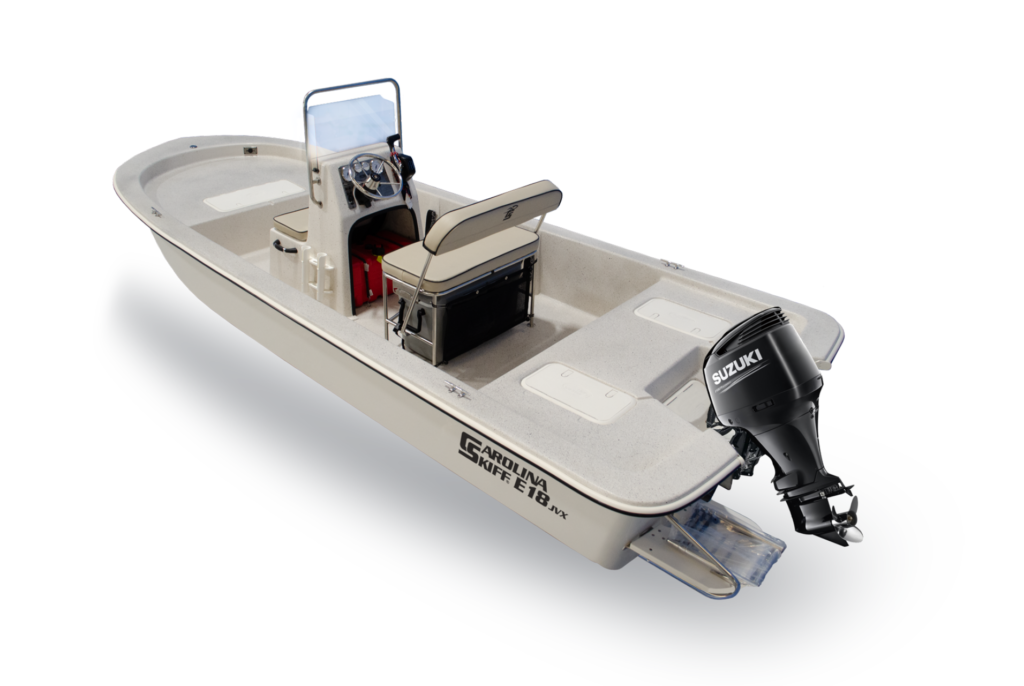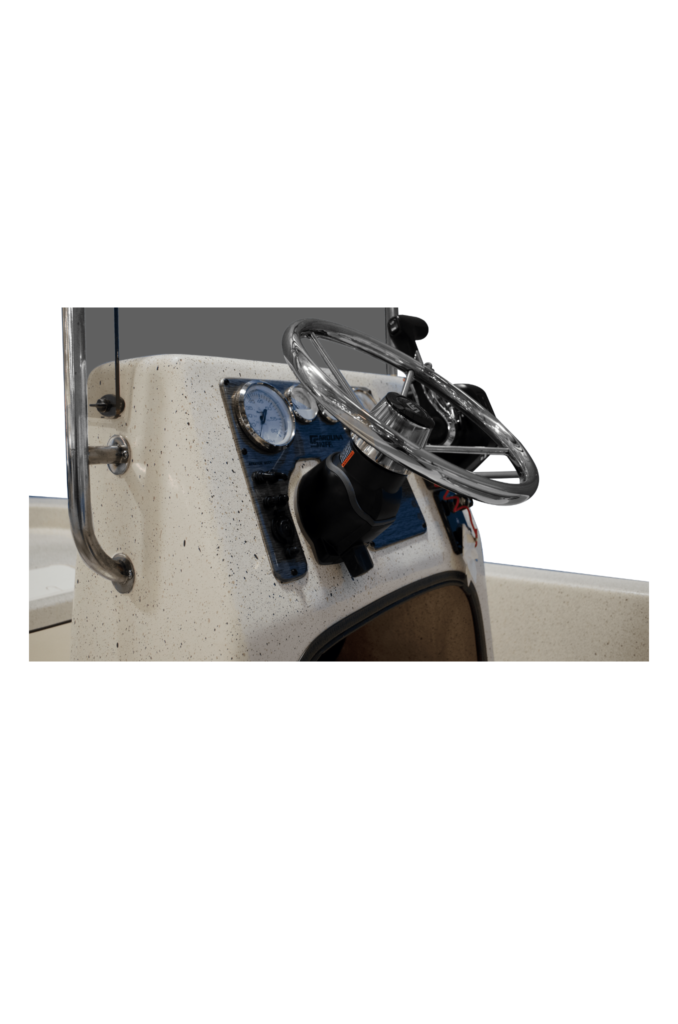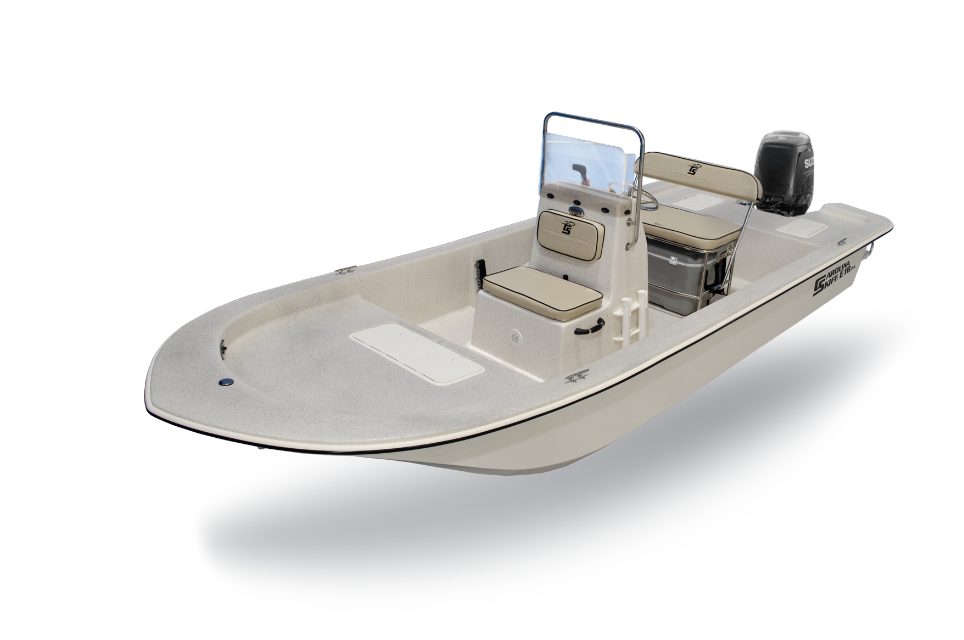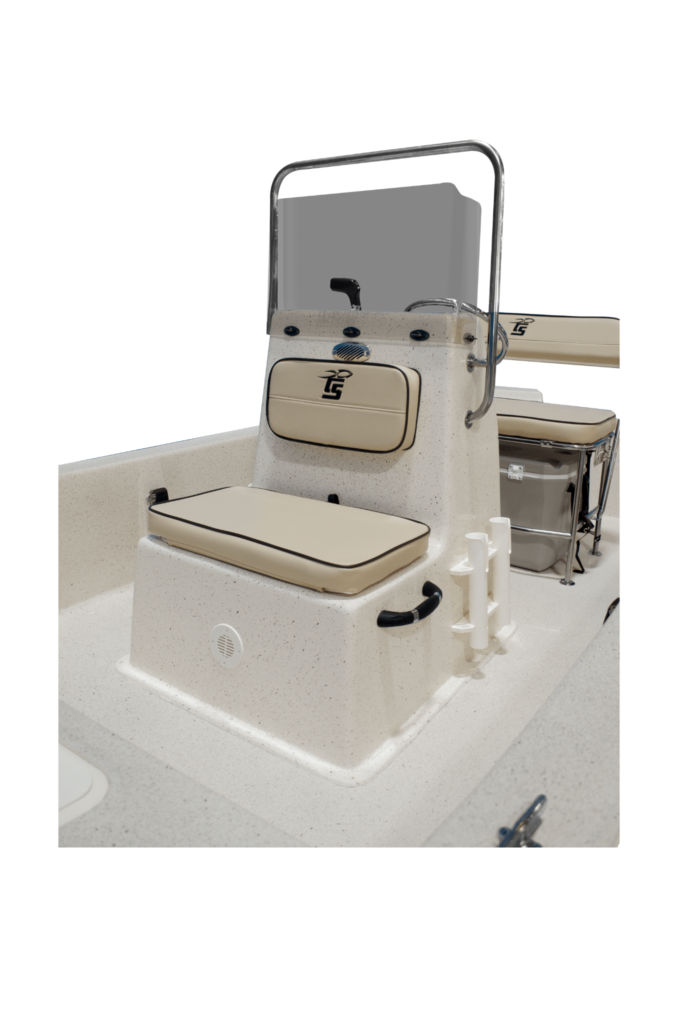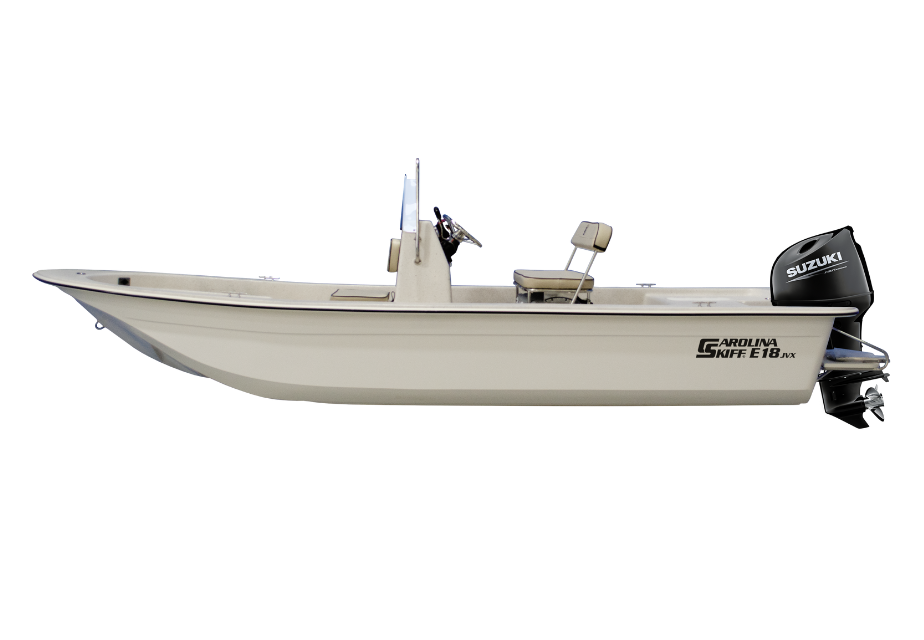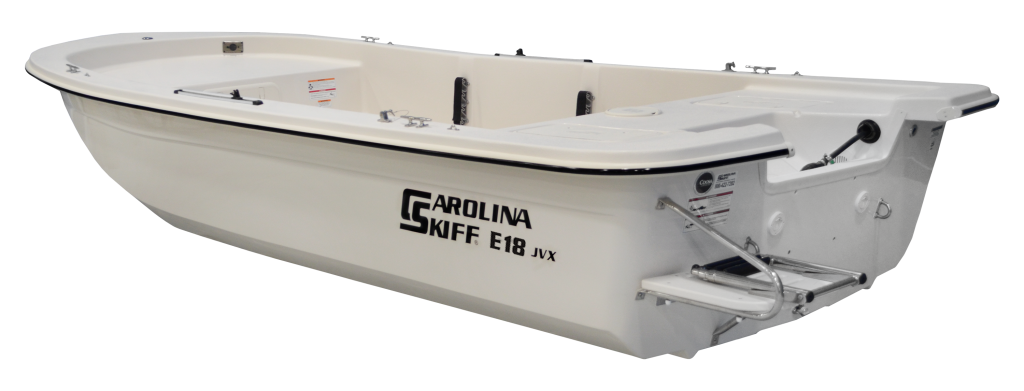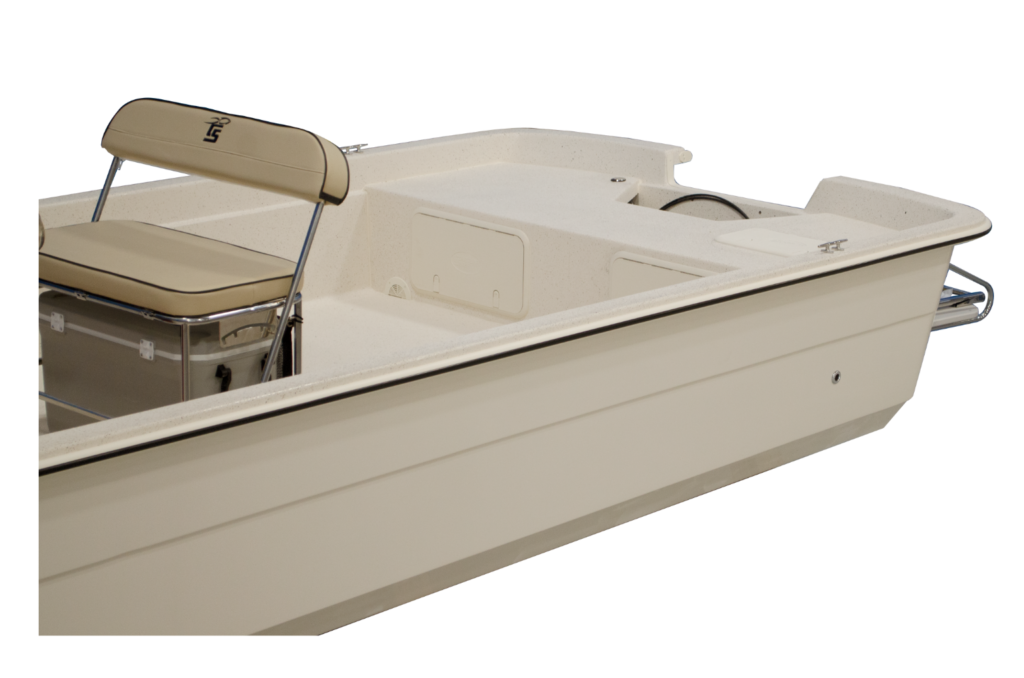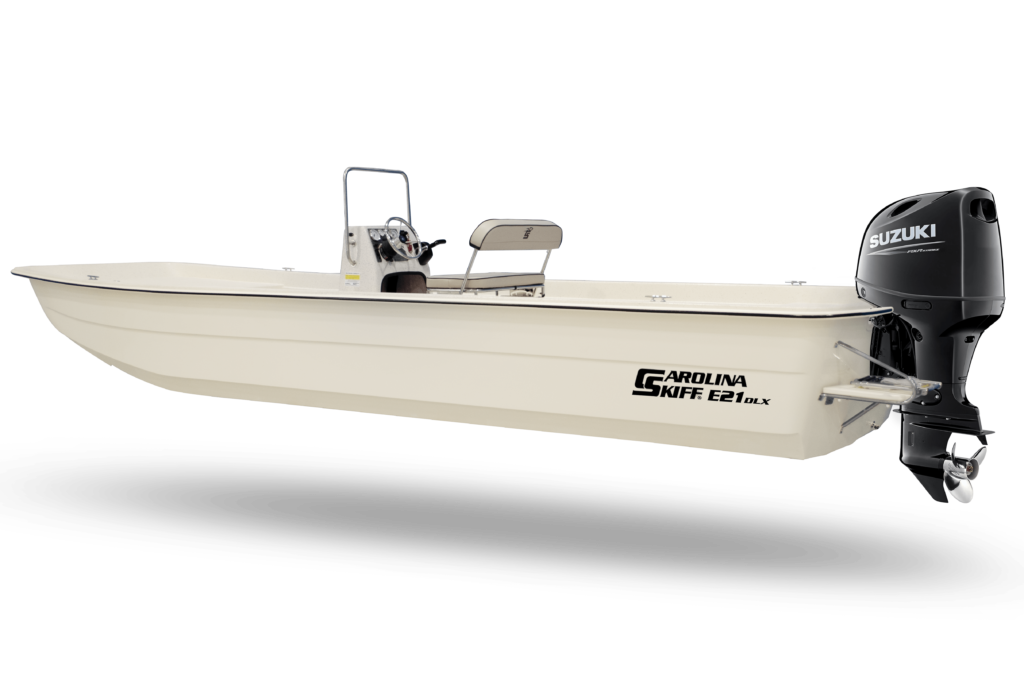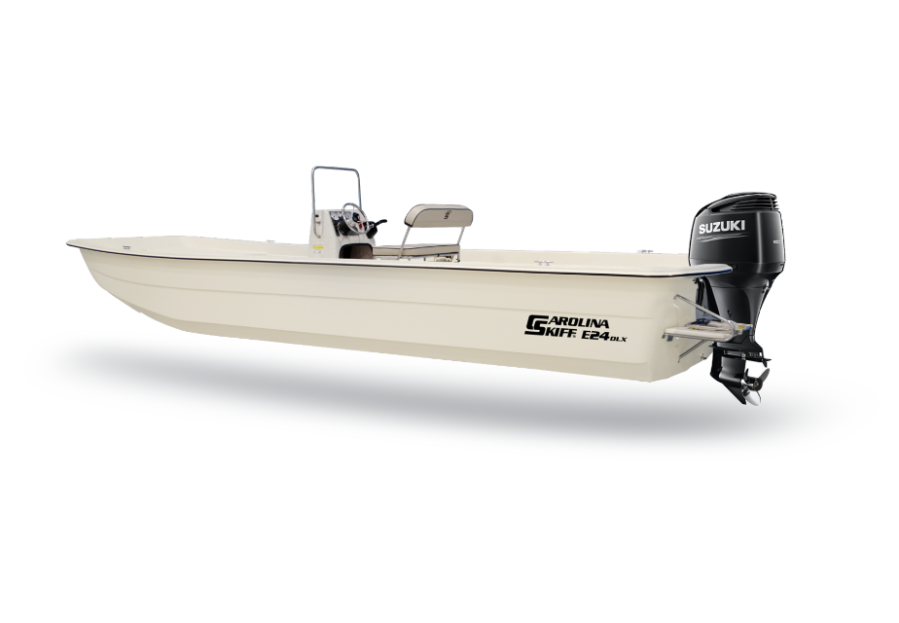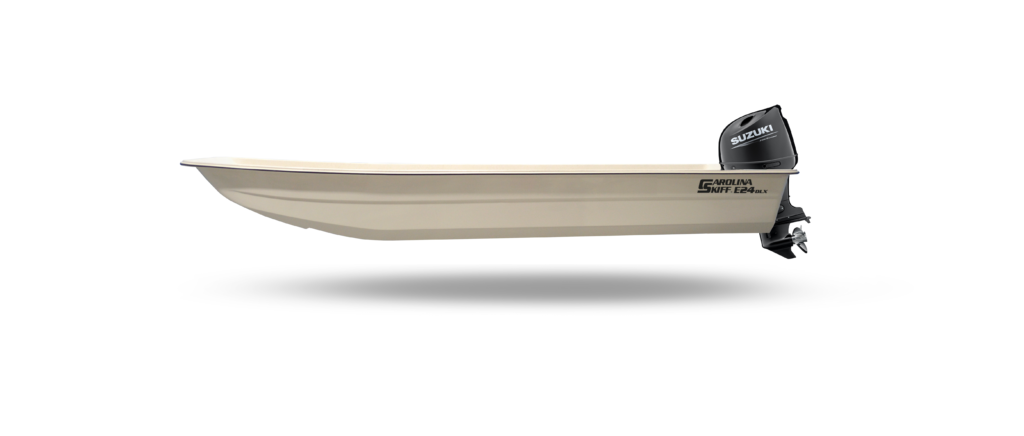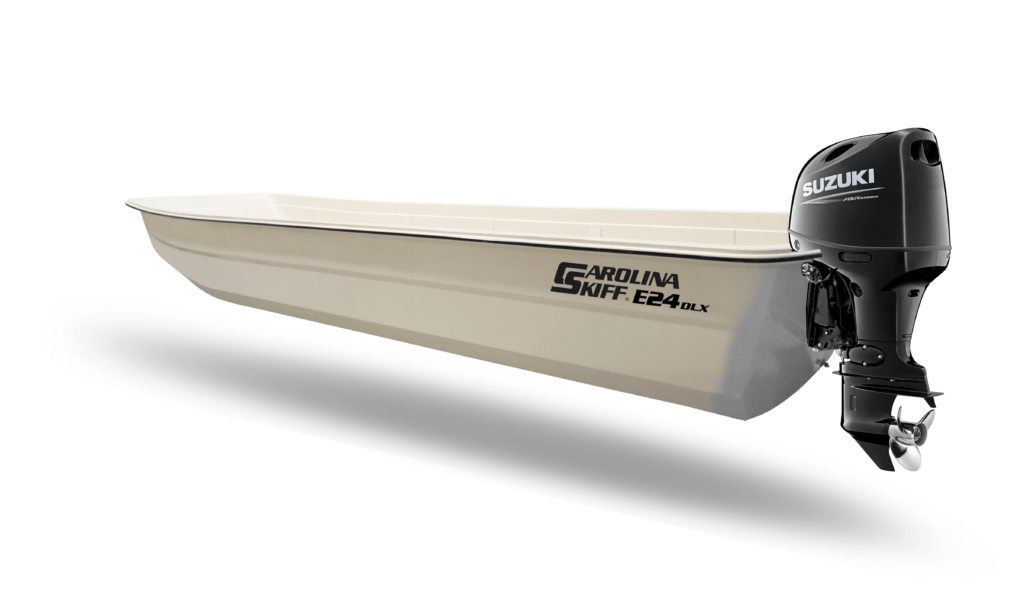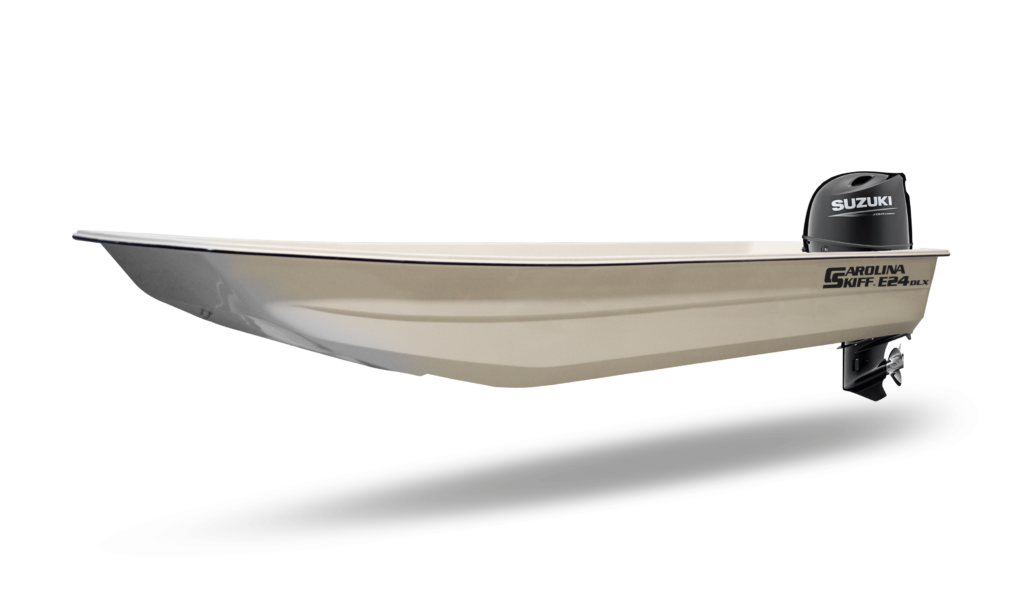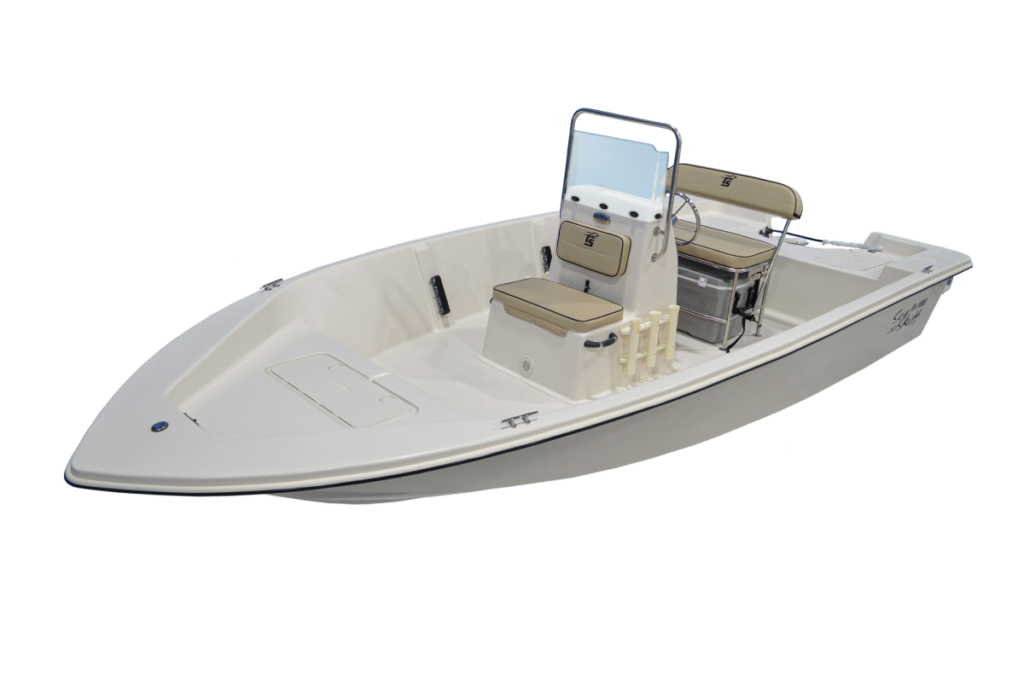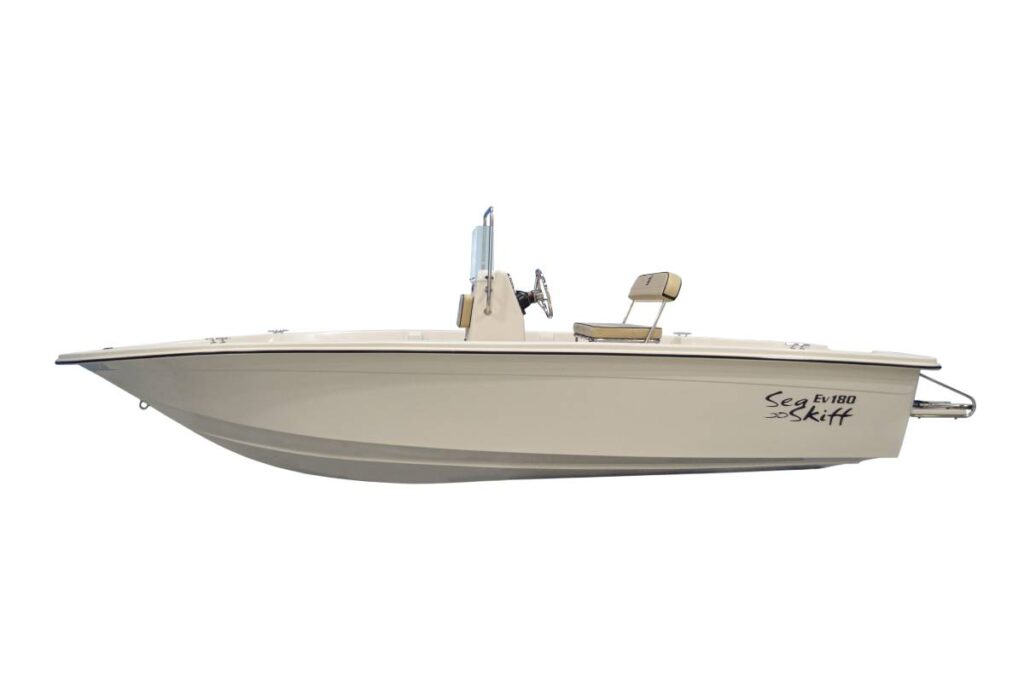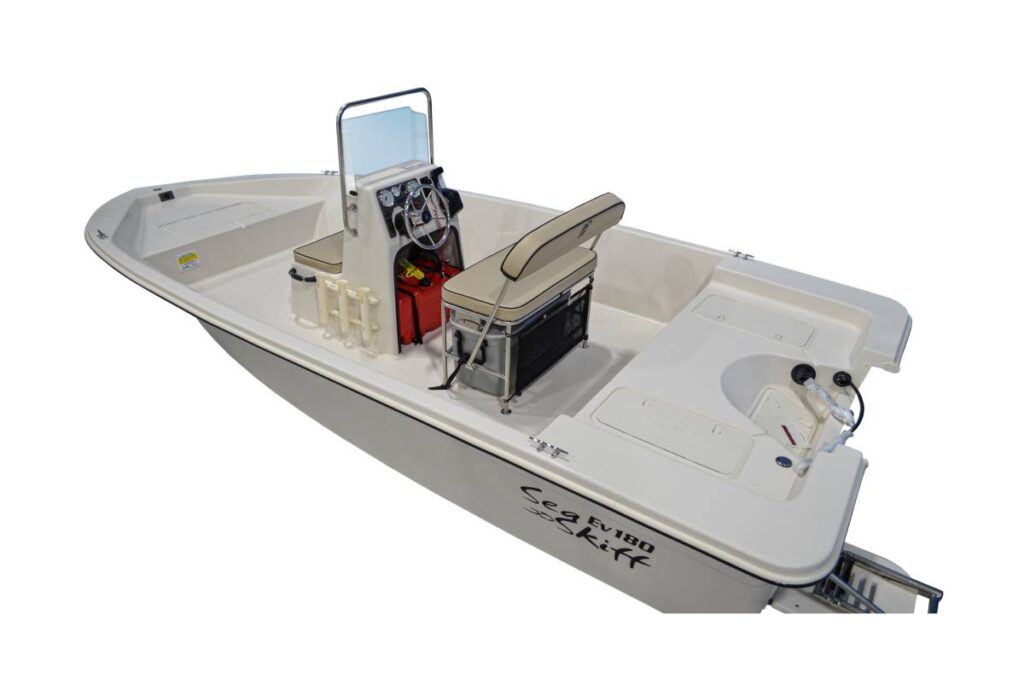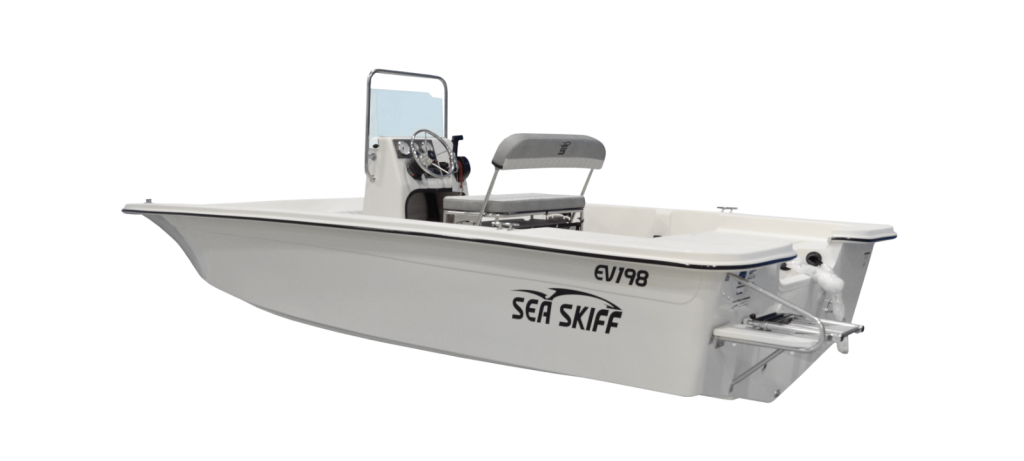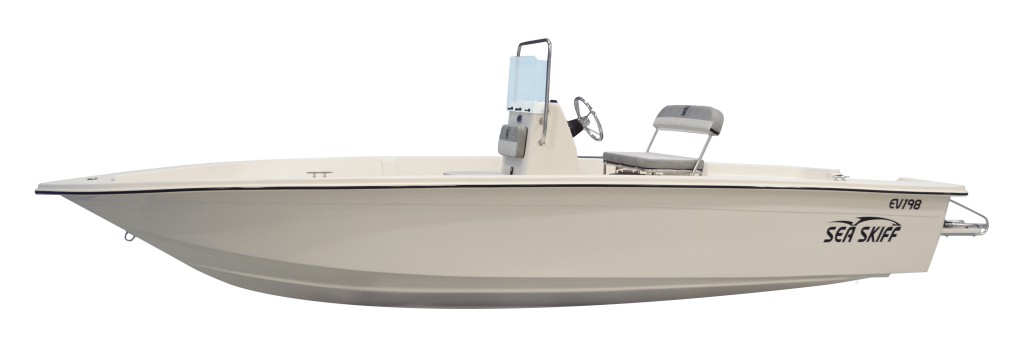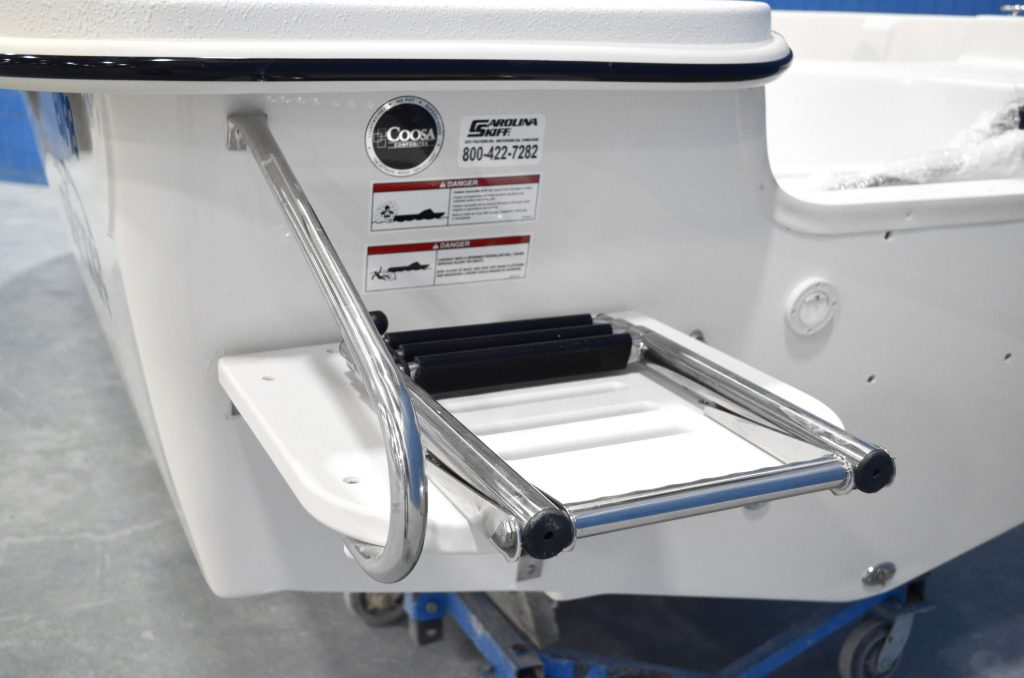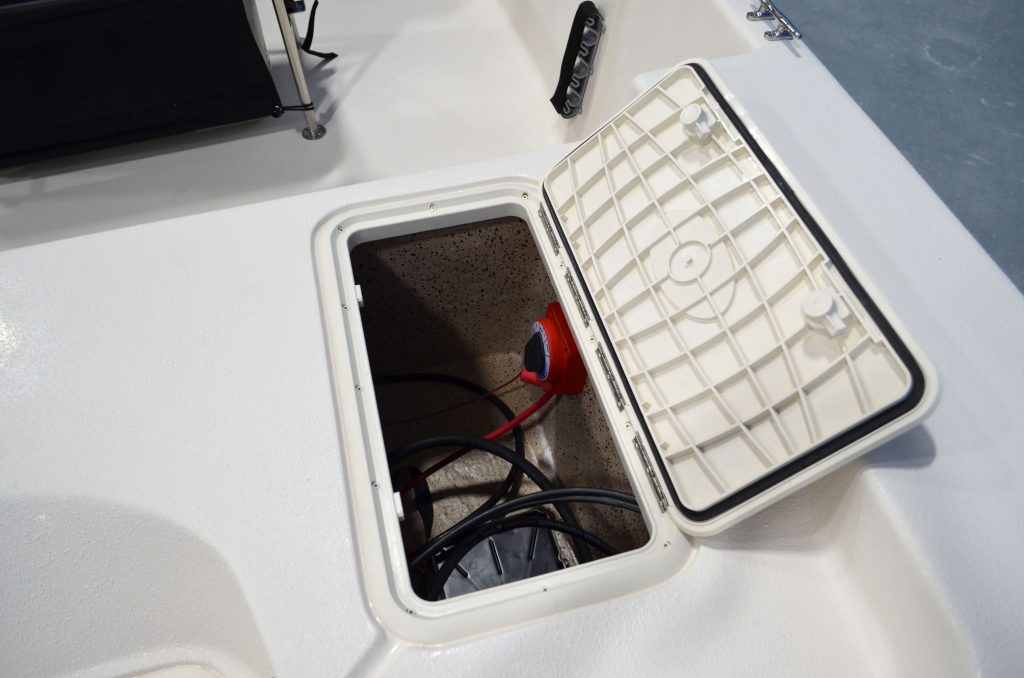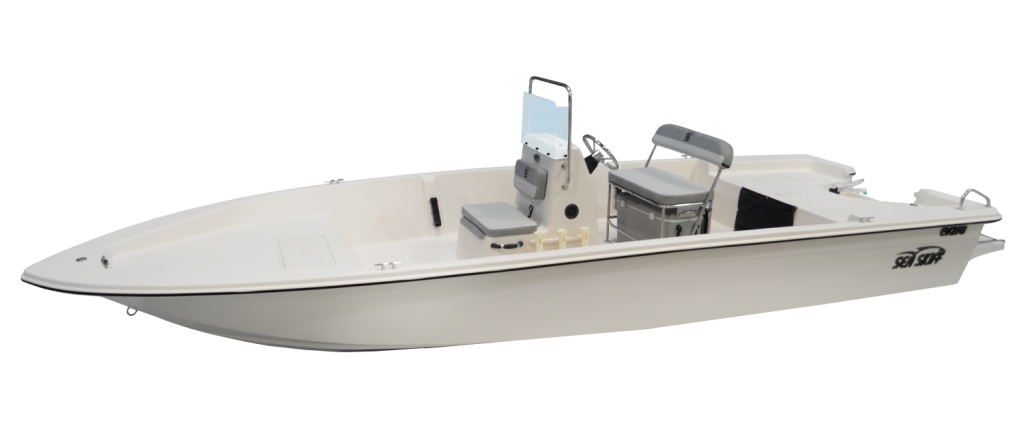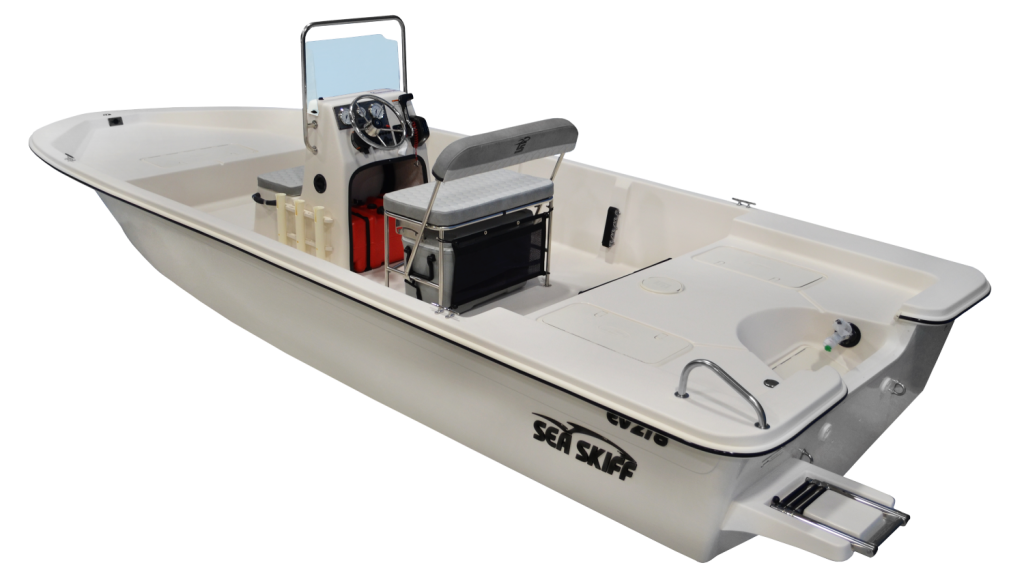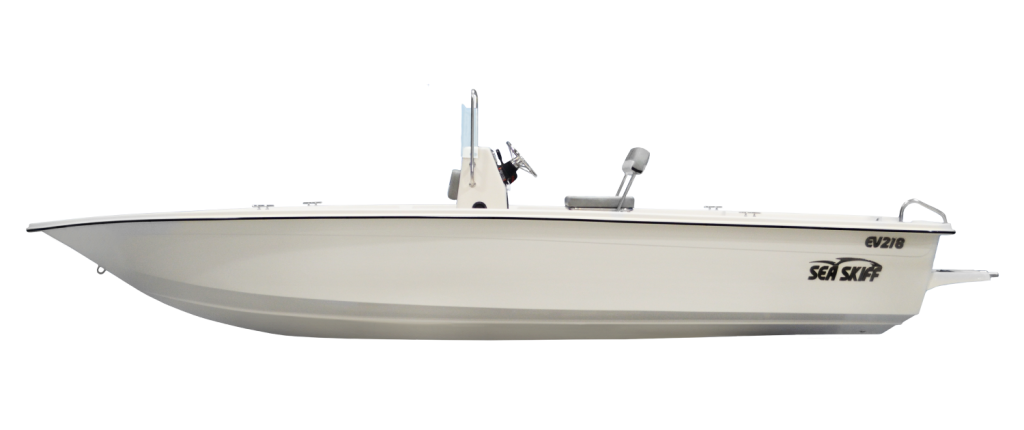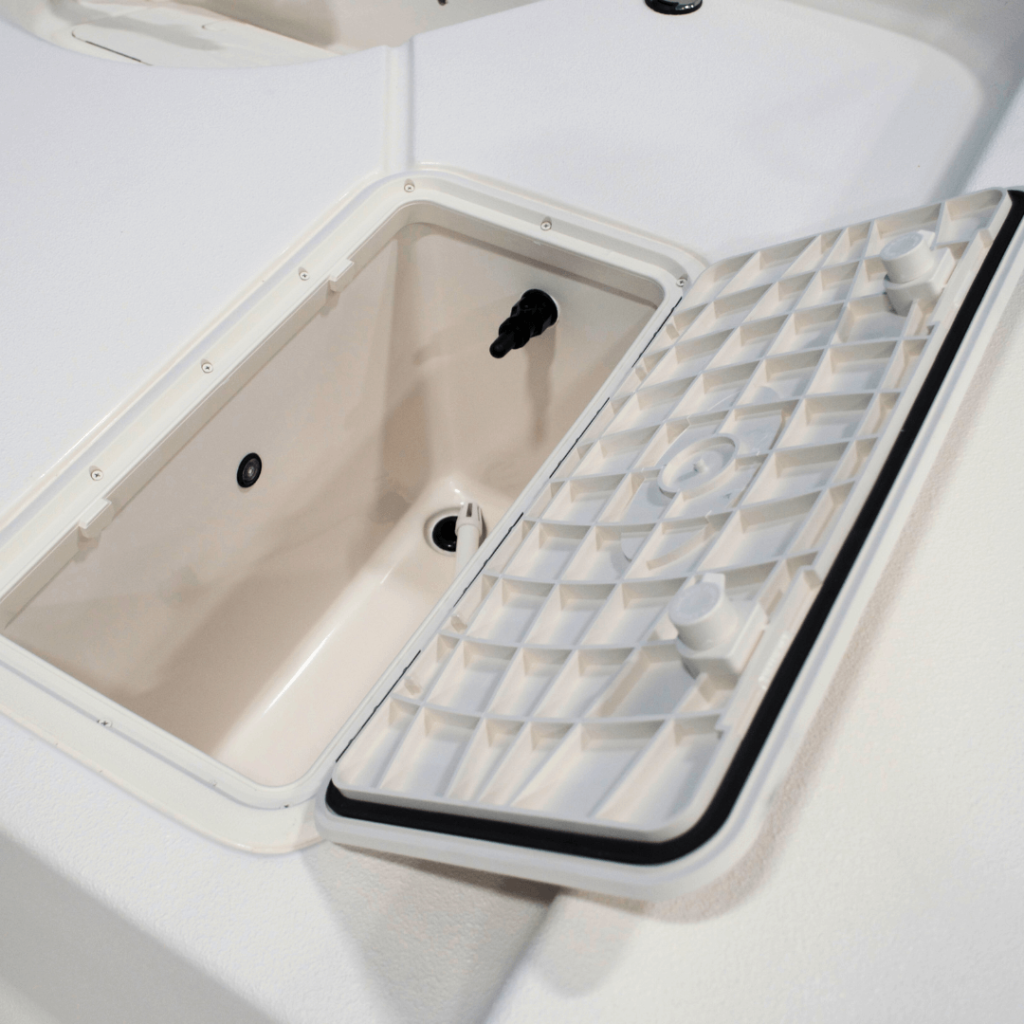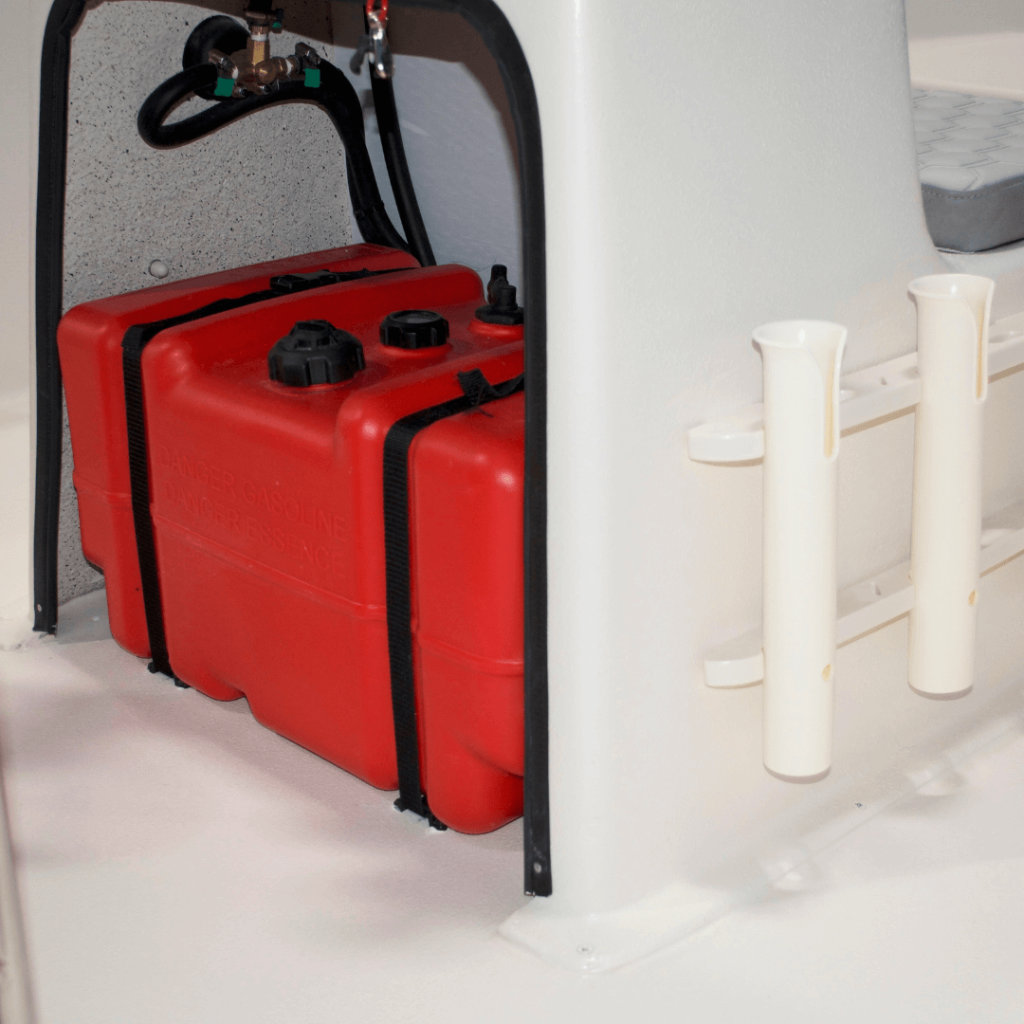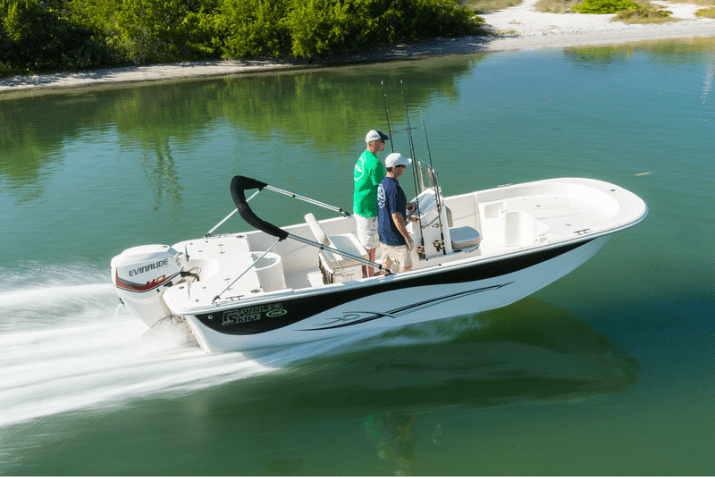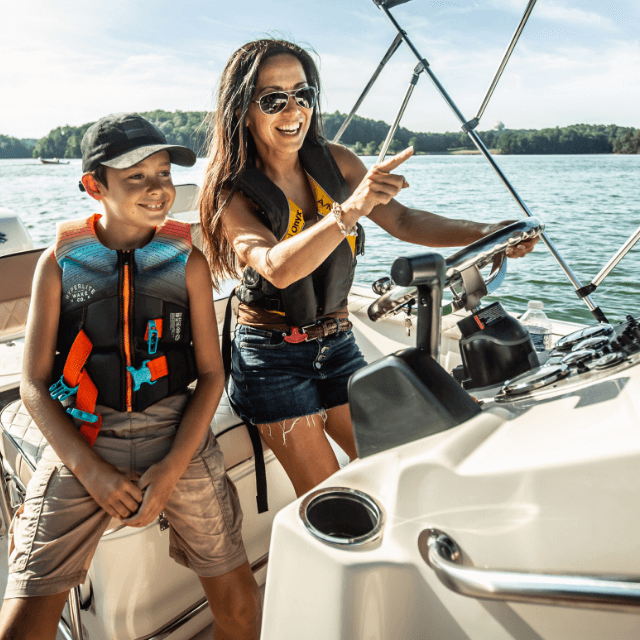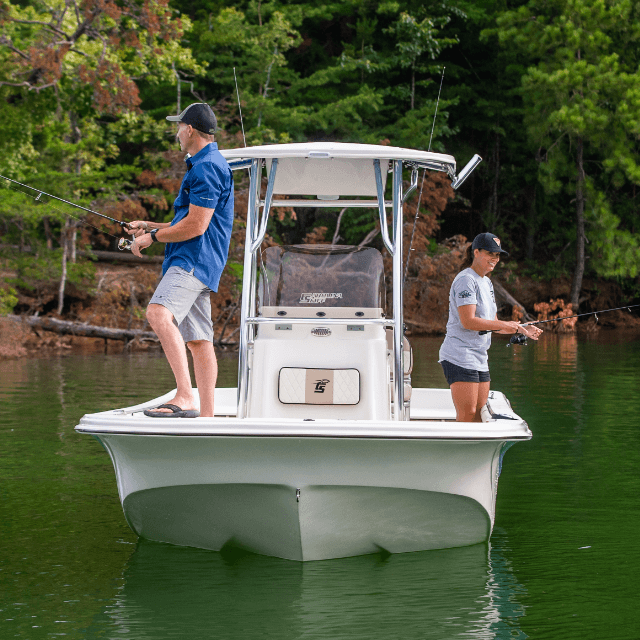Following several months out of the water due to winter weather and other factors, the team at the Sea Turtle Conservancy in Gainesville, Florida is anxious and excited to resume day trips to observe, study and assist sea turtles inland and off the coast of Florida. The Conservancy works out of a custom-outfitted DLX-Extra Wide research vessel that Carolina Skiff donated to the non-profit organization in 2018.
For more than 60 years, the Sea Turtle Conservancy has studied and protected marine turtles and their habitats in and around Florida and beyond. The non-profit’s numerous research programs provide useful biological information about sea turtles, and the group’s education programs raise awareness of sea turtle survival threats. In addition, the Sea Turtle Conservancy’s conservation programs are helping to recover sea turtle populations around the world.
Carolina Skiff is proud to support the work of the Sea Turtle Conservancy. Donating a vessel is one way the company supports the non-profit as they conduct important research that impacts sea turtle conservation. Carolina Skiff is honored to partner the Sea Turtle Conservancy to further their important efforts.
The Sea Turtle Conservancy operates some of the longest continuous turtle protection monitoring programs in the world. In addition to working in Florida, the group works in Costa Rica, Panama, Bermuda, various sites in the Caribbean and elsewhere. Florida is the most active hub for sea turtle activity in the United States, with about 90 percent of sea turtle nesting the country happening on Florida beaches.
“And not only do turtles use our beaches to nest, they inhabit our coastal waters. This is especially true of the juveniles,” said David Godfrey, Executive Director of the Sea Turtle Conservancy. “Many turtles that hatch in the Caribbean or Central America end up in our waters and grow up here. Then they go back to where they started. Many turtles use Florida as a developmental habitat. Of course, we also have turtles that nest in Florida, grow up in Florida and nest here. So we see a mix. But all of this gives us the incredible opportunity to study these turtles when they are very young.”

In 2018, Carolina Skiff donated a DLX-Extra Wide wide-beam, flat-bottom hull with a custom-made side entry door to the Conservancy to allow the group to further their research efforts. The non-profit then outfitted the vessel with a motor and a specially-designed tower with a 7-foot high platform that allows researchers to easily scout for turtles and view surroundings during research outings.
The boat, christened “RV Lavinia” (RV stands for research vessel) or simply “The Lavinia” allows Conservancy researchers to easily and safely navigate shallow waters where juvenile sea turtles are often found.
“We often need to get out on the water in shallow, tight areas. And we needed a boat that could operate in shallow waters safely,” said Godfrey. “Carolina Skiff makes boats that can operate in exactly the kind of conditions in which we frequently work. This boat has been serving us so well for many years.”
The Sea Turtle Conservancy conducts extensive studies regarding the threats that sea turtles face and factors that impact survivorship. This involves moving around by boat in relatively shallow water, observing and documenting sea turtle abundance, how many are visible in the water, what size they are and what times or year they are present in certain areas. The group also monitors many different turtle populations on an ongoing basis seeking to learn more about changing habits and patterns and how modified human behavior can positively impact the turtle population.
“This boat is specifically designed for the work we are doing right now: siting, following and hand capturing or net capturing sea turtles in the water,” added Richard Herren, biologist and project director with the Sea Turtle Conservancy. “This workboat from Carolina Skiff has a center console, great functionality and a deck in front that we can stand on. We are one of the few organizations that do work like this. And it can be difficult to get out on the water sometimes. Some of the shallow water work we’re doing is more challenging than just going up and down the beach interacting with nests. Intense research allows us to study juvenile animals decades before they become mature. Sea turtles can take 30 to 40 years to achieve maturity.”
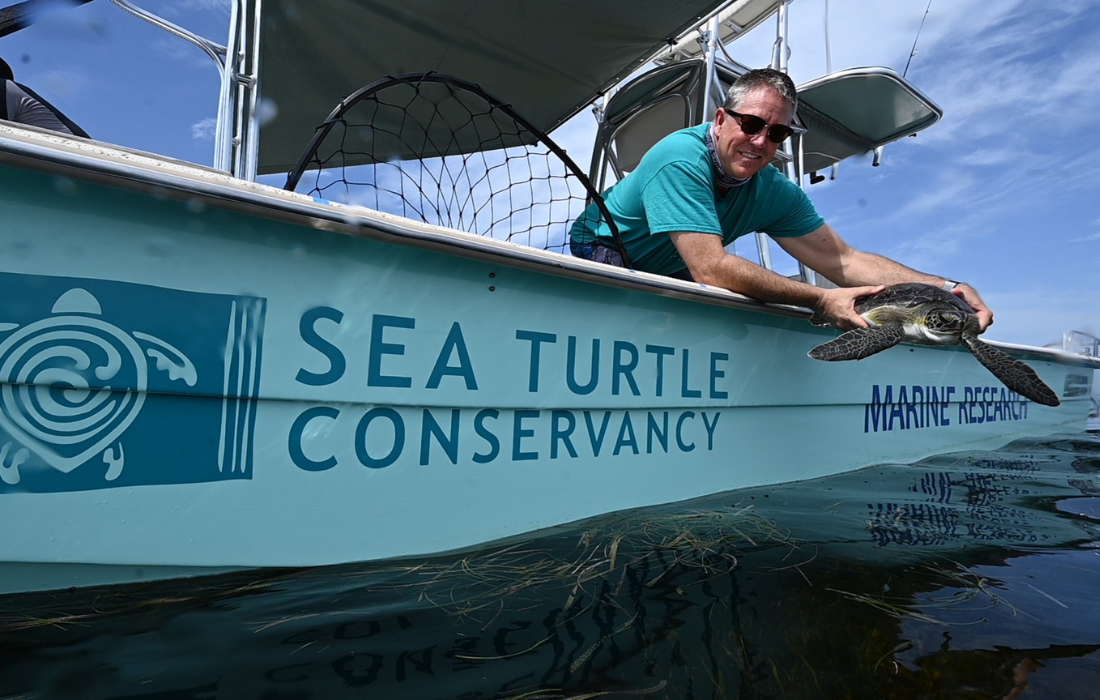
Recently, the Conservancy has been studying turtles in the north eastern Gulf of Mexico on the coast just west of Gainesville, an area known as the Big Bend of Florida. That coastline in that area is peppered with sea grass beds and oyster beds and is home to at least four species of sea turtles. The Conservancy has been monitoring several groups both visually and with satellite tags and is looking forward to increased turtle activity as outdoor temperatures rise and the water warms up.
One of the Conservancy’s satellite tagged turtles was named in honor of Carolina Skiff. Caroline is the Conservancy’s longest tracked loggerhead turtle, and the group has been monitoring her movements for more than three years. She nested in the Archie Carr National Wildlife Refuge in Melbourne Beach, Florida during the 2017 nesting season and now spends her time foraging in the Bahamas. If she returns to Florida beaches this summer, her transmitter will be removed. Caroline has provided countless hours of valuable data to the research team.
Due to its unusual appointments and labeling as a research vessel, Herren said the research Carolina Skiff boat attracts attention whether the team is filling up with gas, pulling the boat on a trailer or out on the open water.
“The community is enamored with this boat wherever we go,” said Herren. “Whether we’re filling up or in the canals, this boat is an eye-catcher, that’s for sure. It gets people’s attention, and they see that it’s a Carolina Skiff. We’ve had dozens of people ask us about the boat. We have had plenty of opportunities to tell them about all of the amenities of the boat, but we also have the opportunity to talk about our work, our research and our conservation efforts.”
Although The Lavinia has been in service for the Sea Turtle Conservancy for several years, the boat still looks outstanding, added Godfrey.
“A boat has a life. We know that. And they get beat up and have wear and tear. But we take very good care of this boat. Rick treats it like his baby. And it allows us to tell people about our work and show them what we’re doing,” added Godfrey. “We are so grateful for any opportunity that allows us to talk to people about the conservation of sea turtles. We are a voice. We actively advocate for these animals. We monitor legislation, we keep an eye on what happens at the local level and the international level and we actively try to get people to change their behavior to protect these animals. That is at the heart of everything we do.”
Carolina Skiff is a proud to partner with the Sea Turtle Conservancy and supports the non-profits work to revive sea turtle populations, protect their habitats and educate the world about safe practices and much more. To learn more about the Sea Turtle Conservancy, please visit http://www.conserveturtles.org.
At Carolina Skiff, building one of the best quality boats for a great price has always been our goal. Whether you’re looking for a pleasure boat, fishing boat, runabout or commercial/work boat, Carolina Skiff delivers the most in value, quality and style. With several models and sizes from which to choose, finding the right Carolina Skiff to meet your needs is simple. Find a Carolina Skiff dealer near you today or visit https://carolinaskiff.com/ to learn more.

